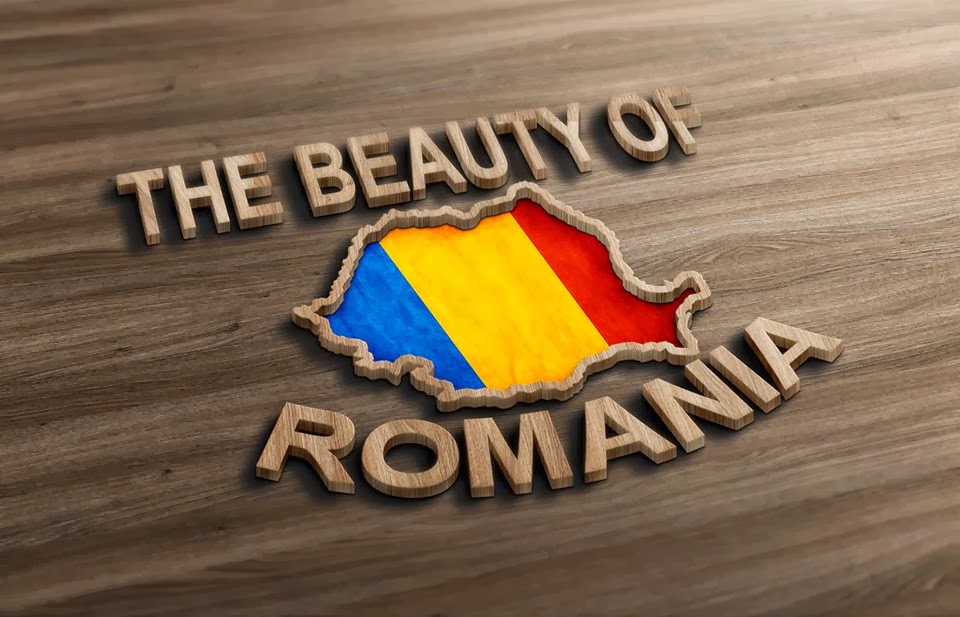Info Trip 2013
The "Beauty Of Romania" was invited to participate in an international tourism conference in Bucharest and an Info Trip in Transilvania and the Danube Delta.
Day 1 (2.7): Arriving to Bucharest
We arrived to the Otopeni airport in Bucharest.
After a warm welcoming in the Airport we checked in a beautiful hotel in the center of the city.
The weather was great and since the welcome cocktail is only at 20:00, we had a lot of time to tour Bucharest.
Bucharest Synagogue
Day 1 (2.7): Arriving to Bucharest
We arrived to the Otopeni airport in Bucharest.
After a warm welcoming in the Airport we checked in a beautiful hotel in the center of the city.
The weather was great and since the welcome cocktail is only at 20:00, we had a lot of time to tour Bucharest.
Bucharest Synagogue
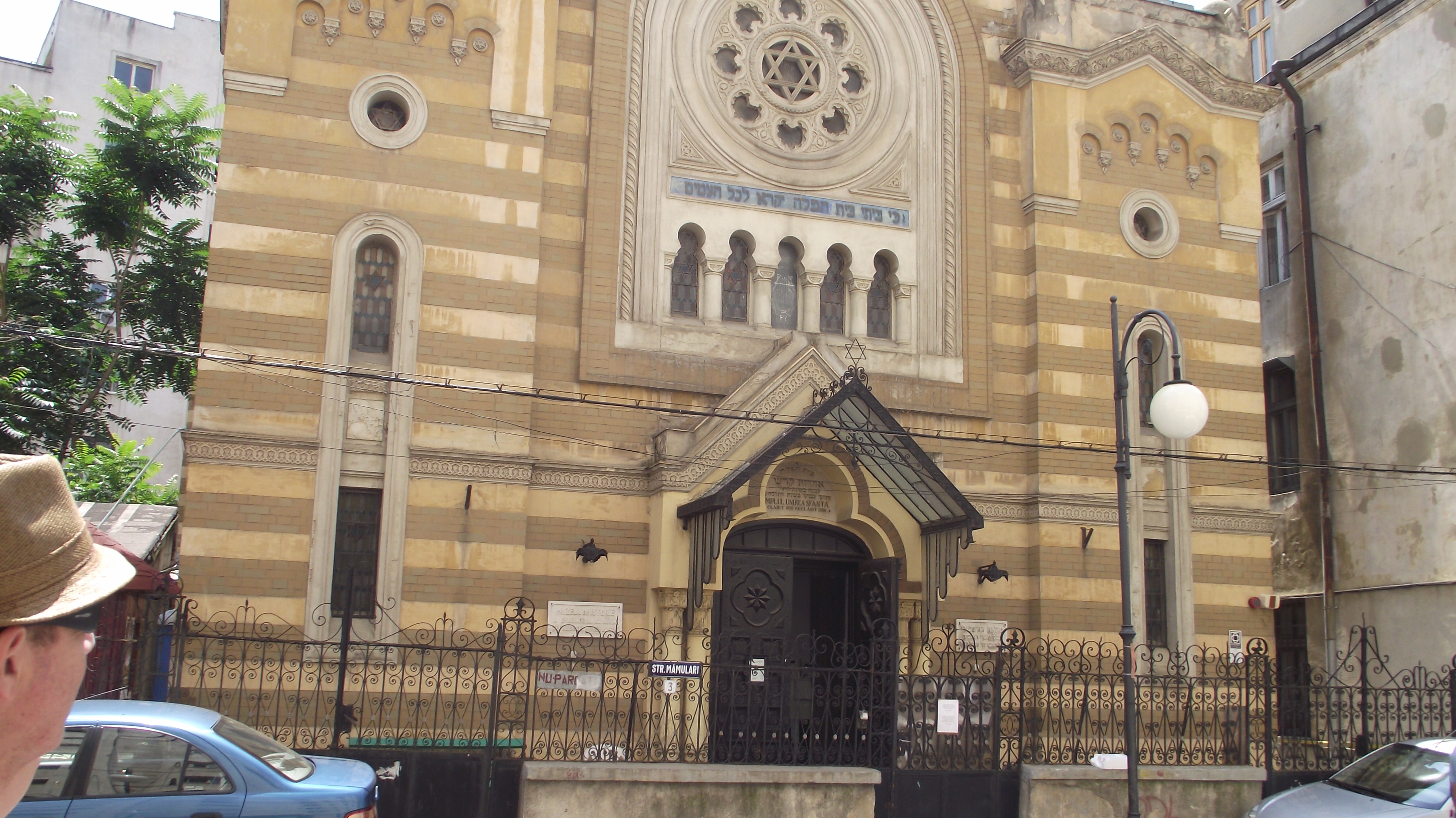
The Historic Centre with lots of great pubs,Restaurants and shops.
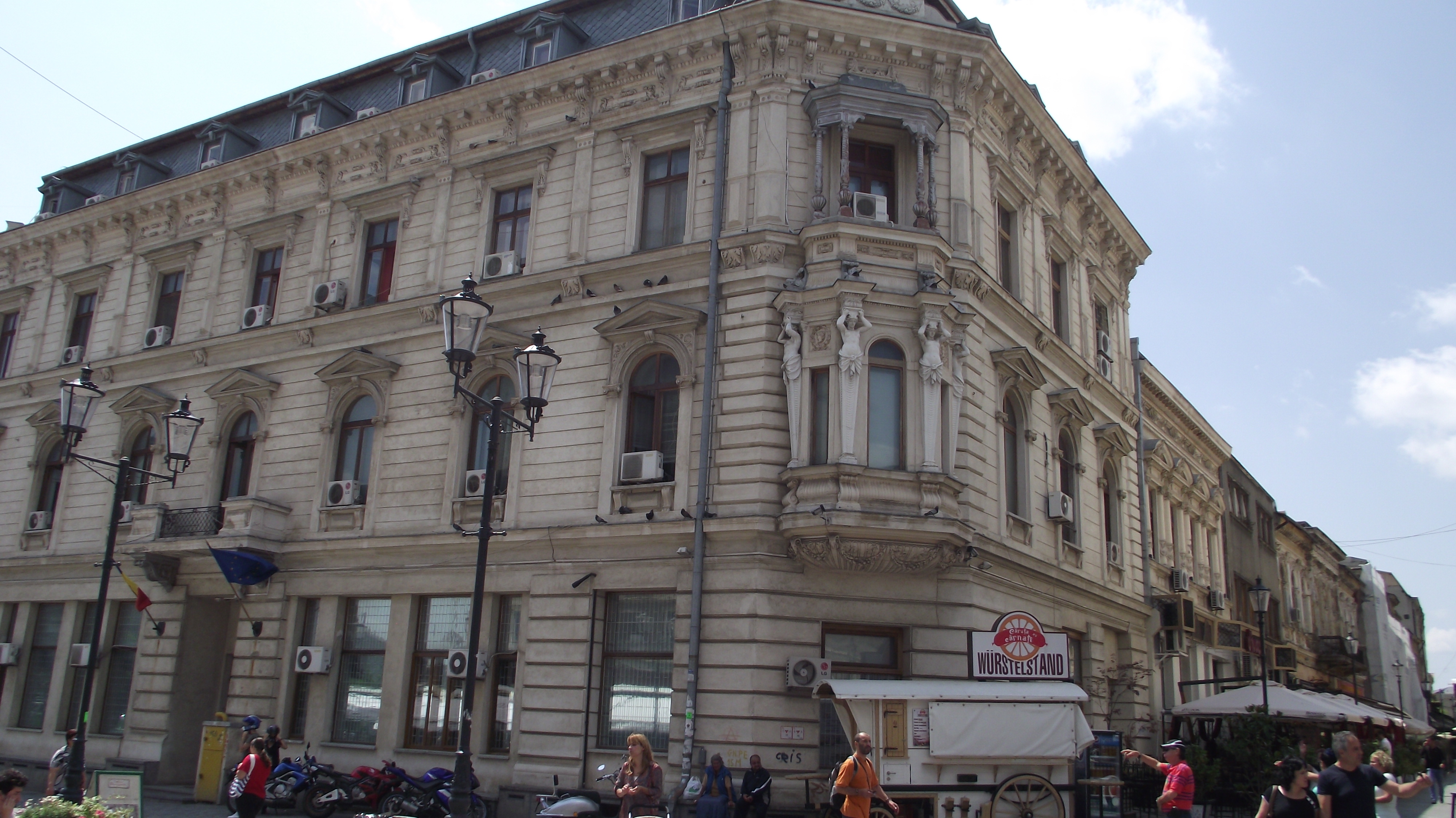
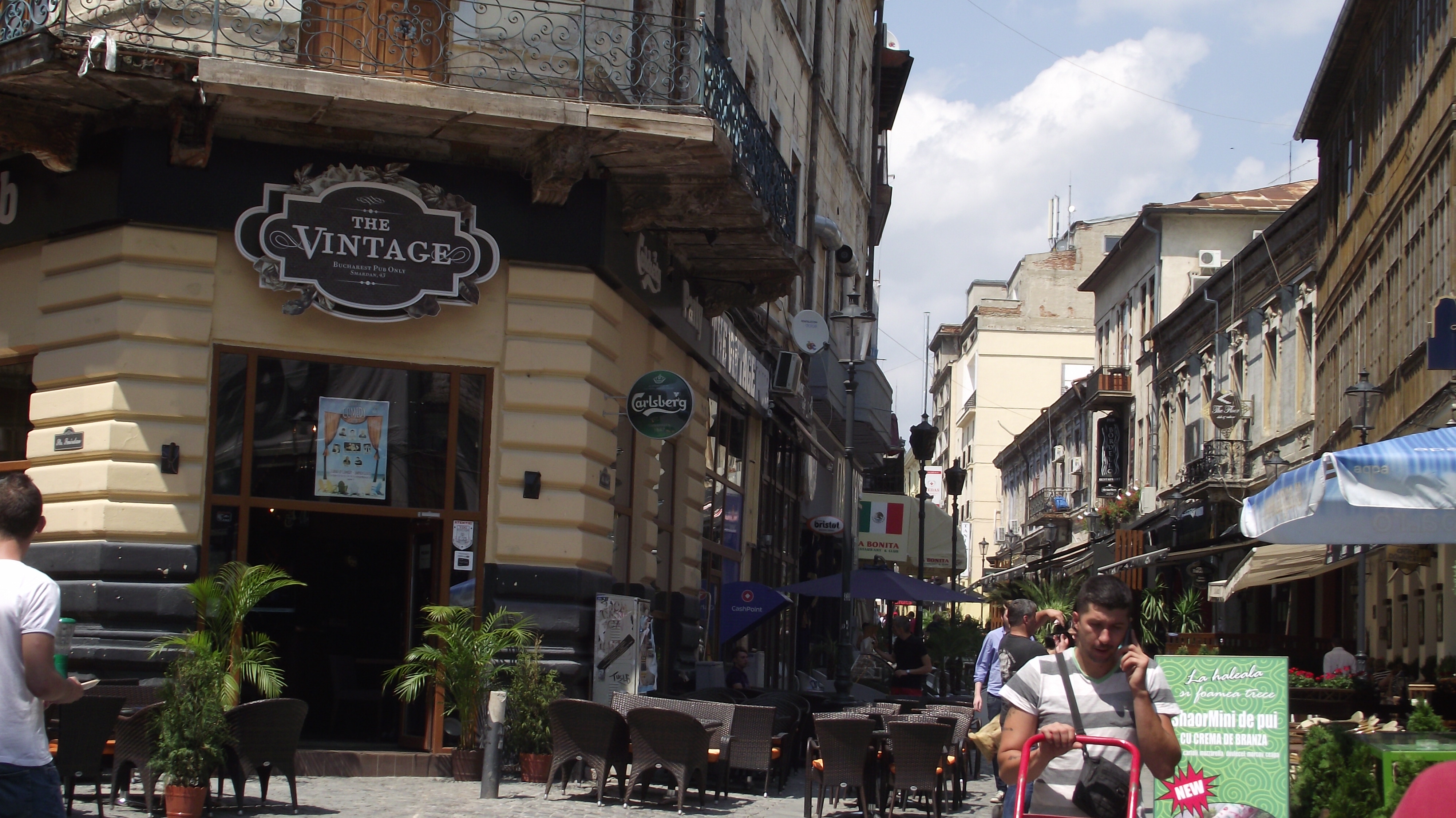
The welcoming cocktail took place in the amazing Marriott JW Grand Hotel, which was the first JW Marriott open in Europe.
It was a very high class cocktail:
Mrs. Maria Grapini,Minister Delegate For SMEs,Business Environment and Tourism
Mr. Sorin Oprescu,The Mayor of Bucharest
It was a very high class cocktail:
Mrs. Maria Grapini,Minister Delegate For SMEs,Business Environment and Tourism
Mr. Sorin Oprescu,The Mayor of Bucharest
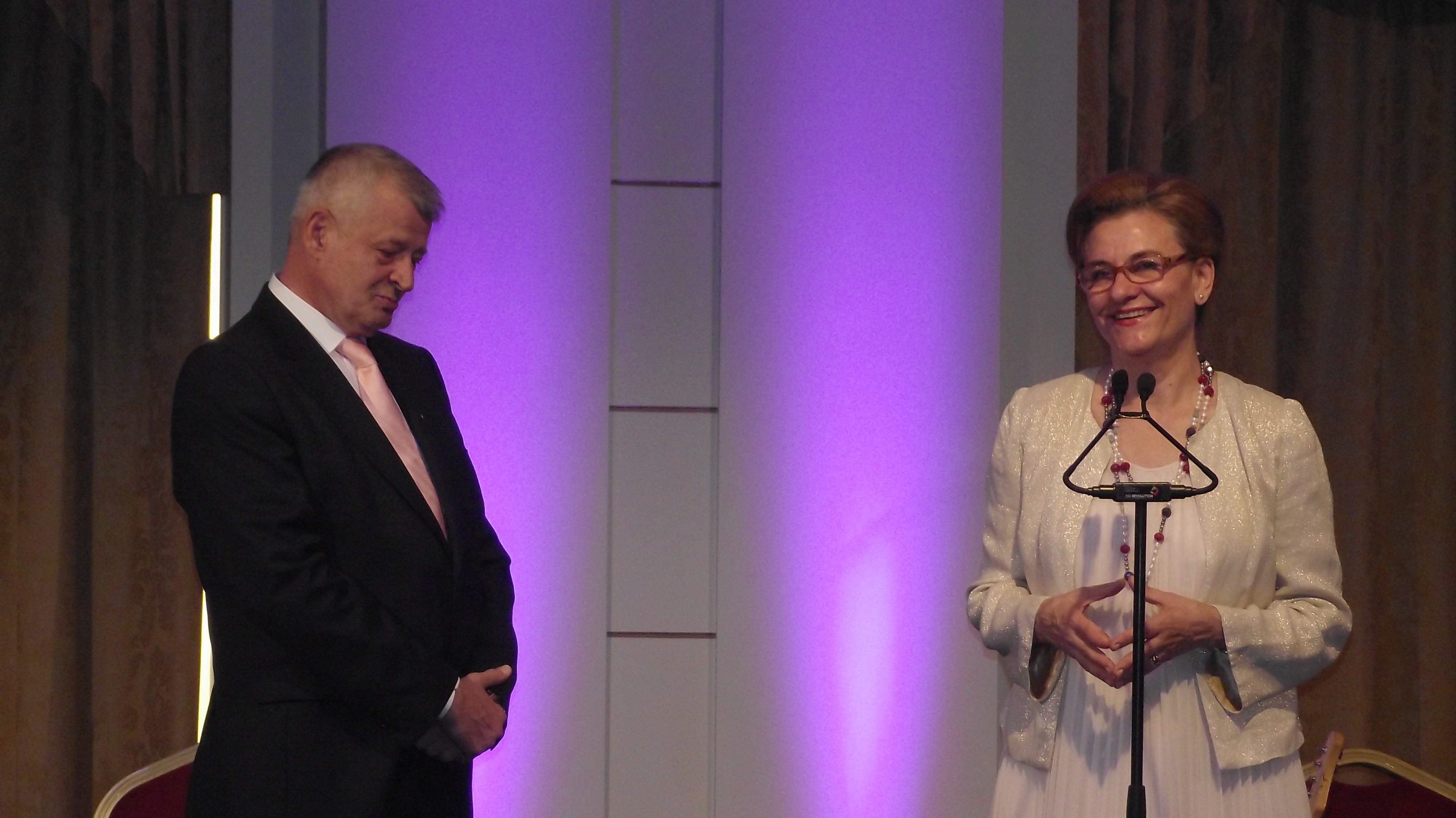
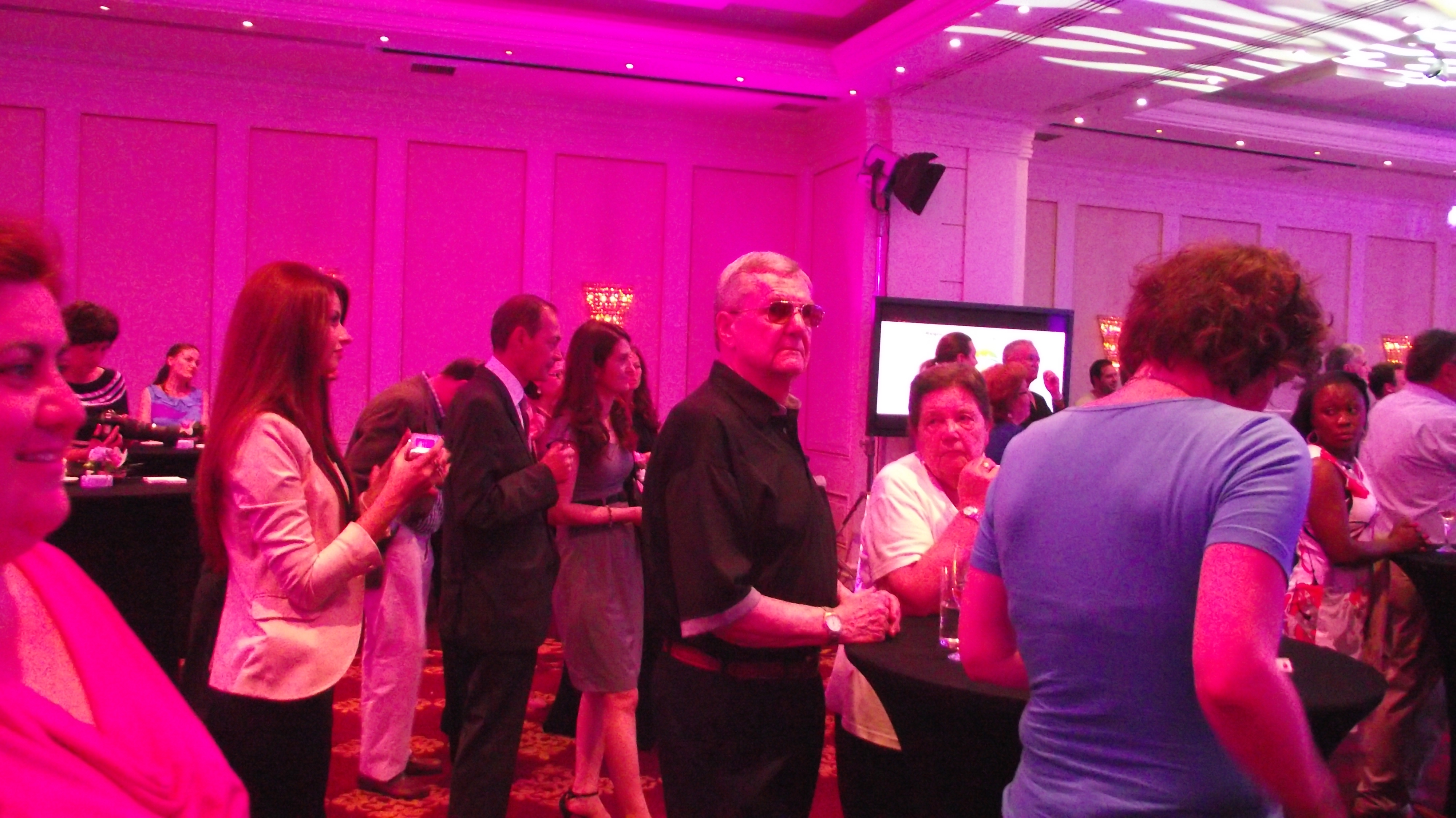
Day 2-3 (3-4.7):International Tourism Conference and leaving for Tulcea
The International tourism Conference took place at the Romanian Parliament.
This famous building holds three World Records in Guinnes Book.
It is the largest building in Europe and second largest in the world after the American Pentagon.
The Parliament
The International tourism Conference took place at the Romanian Parliament.
This famous building holds three World Records in Guinnes Book.
It is the largest building in Europe and second largest in the world after the American Pentagon.
The Parliament
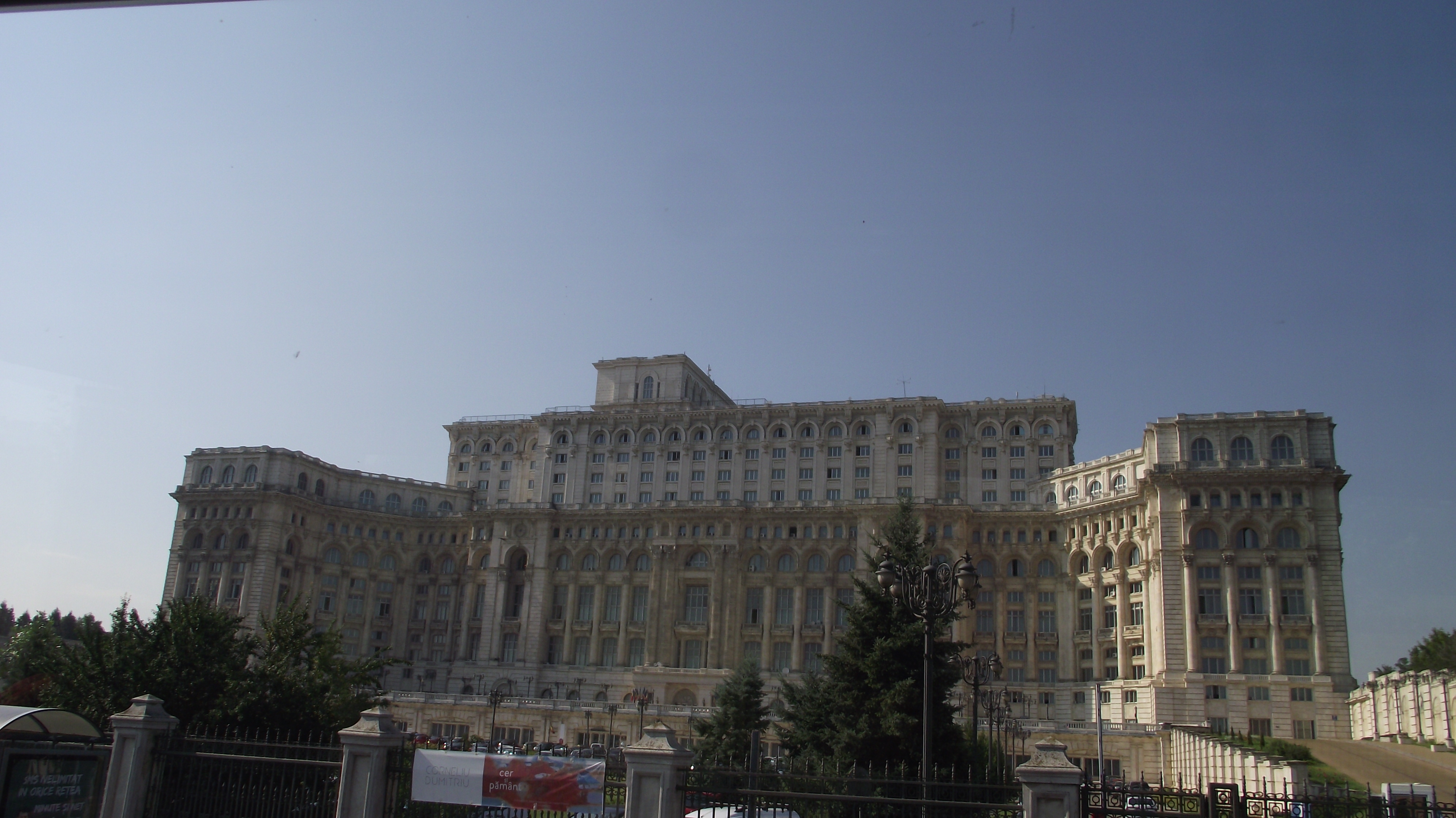
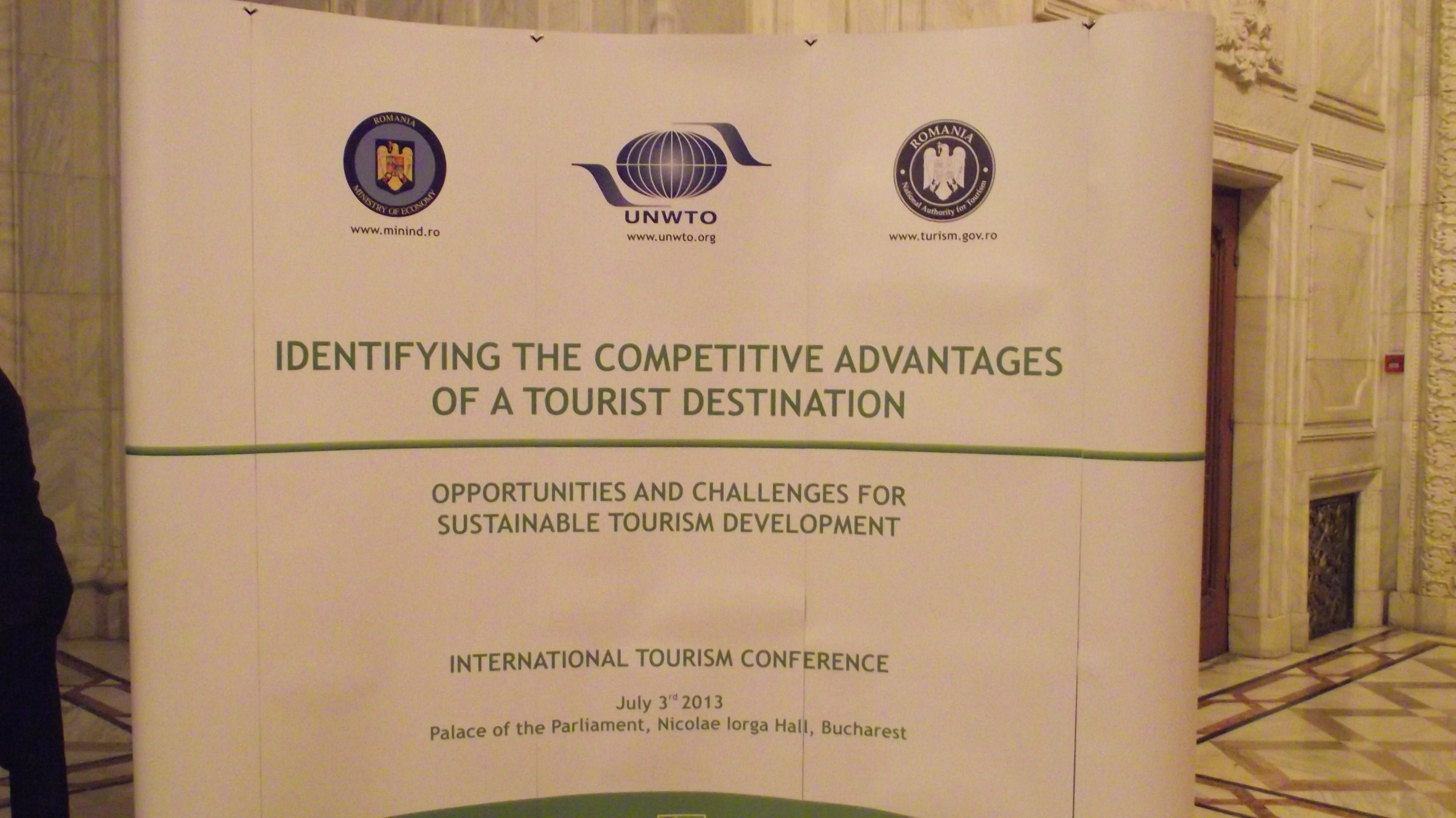
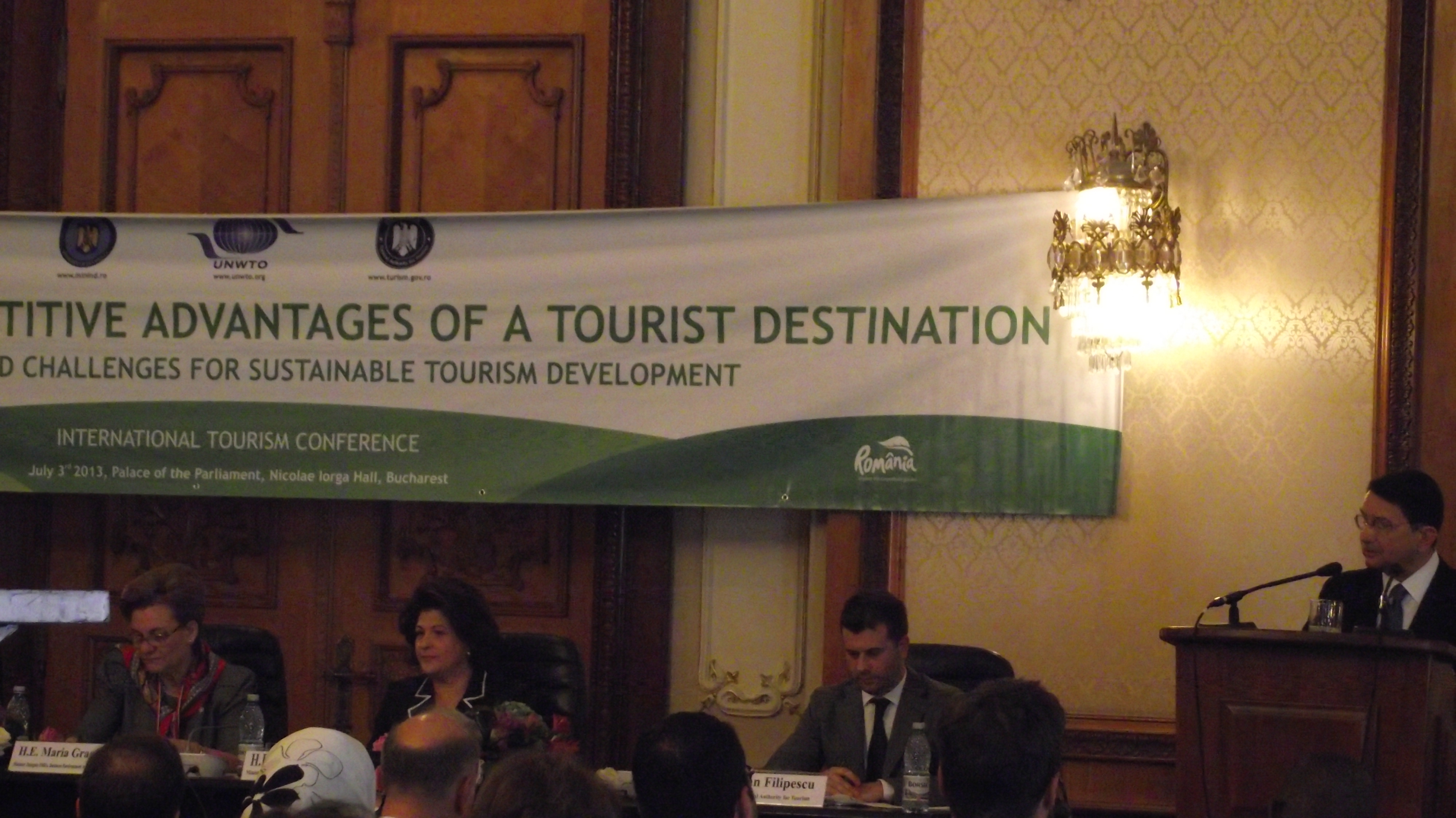
The Conference was honored by the presence of UNWTO's Secretary General Mr. Taleb Rifai, which was delighted to point out the advantages Romanian unknown destinations have.
After the conference, we left to Tulcea, East of Bucharest, where we arrived by the end of the day.
On this occasion we have realized the importance of more highways Romania needs in order to transport the tourists faster to remote destinations, such as the unbelievable Danube Delta.
We were accommodated at the comfortable Hotel Esplanada, which has an attractive location, right on the Danube's banks.
Few more facts about the Danube Delta (Source: UNESCO World Heritage):
"The waters of the Danube, which flow into the Black Sea, form the largest and best preserved of Europe's deltas. The Danube delta hosts over 300 species of birds as well as 45 freshwater fish species in its numerous lakes and marshes.
The waters of the Danube, which flow into the Black Sea, form the largest and best preserved of Europe's deltas. The Danube delta hosts over 300 species of birds as well as 45 freshwater fish species in its numerous lakes and marshes.
The reserve is vast in European terms with numerous freshwater Lakes interconnected by narrow channels featuring huge expanses of aquatic vegetation. This is the largest continuous marshland on Europe and the second-largest delta (the Volga being the largest), which includes the greatest stretch of reedbeds in the world. The marsh vegetation is dominated by reeds which form floating or fixed islands of decaying vegetation Reeds cover some 1,700 km2 and the floating reed islands (plaur ) 1,000 km2 , whereas the total area not inundated is only 148 km2 . The Razelm-Sinoie complex to the south comprises several large brackish lagoons separated from the sea by a sandbar. The overall basic hydrological and ecological system of the delta, although strongly degraded, is intact.
The higher ground supports stands of willow, popular, alder and oak. There are also sandy areas covered with feather grass and other steppe species. Forest elements are best observed in Letea Forest where a series of bands occur along dunes up to 250 m long and 10 m wide. The delta has been classified into 12 habitat types as follows: aquatic, lakes covered with flooded reedbeds; 'plaur', flooded islets; flooded reeds and willows; riverine forest of willows and poplars; cane-fields; sandy and muddy beaches; wet meadows; dry meadows (arid); human settlements; sandy and rocky areas; steep banks; and forests on high ground.
Over 300 species of bird have been recorded, of which over 176 species breed, the most important being cormorant, pygmy cormorant, white pelican and Dalmatian pelican. There are numerous multi-species heron colonies and raptor species including white-tailed eagle. The marsh tern colonies are especially notable. The delta holds huge numbers of geese in the winter white-fronted geese, red-breasted geese (a globally threatened species with almost all the world wintering population present), teal, mallard and pochard. The delta is very important for fish, with 45 fresh water species present. Otter and weasel are to be found on the floating islands. The Danube Delta is a remarkable alluvial feature constituting critical habitat for migratory birds and other animals. It is the major remaining wetland on the flyway between central and Eastern Europe and the Mediterranean and Middle East and Africa. It is exceptional for its contiguity of wetland ecosystem and currently supports endangered flora and fauna. The threats remain numerous and include intensive fish farming, shooting, canal and dyke construction and pollution and eutrophication."
After the conference, we left to Tulcea, East of Bucharest, where we arrived by the end of the day.
On this occasion we have realized the importance of more highways Romania needs in order to transport the tourists faster to remote destinations, such as the unbelievable Danube Delta.
We were accommodated at the comfortable Hotel Esplanada, which has an attractive location, right on the Danube's banks.
Few more facts about the Danube Delta (Source: UNESCO World Heritage):
"The waters of the Danube, which flow into the Black Sea, form the largest and best preserved of Europe's deltas. The Danube delta hosts over 300 species of birds as well as 45 freshwater fish species in its numerous lakes and marshes.
The waters of the Danube, which flow into the Black Sea, form the largest and best preserved of Europe's deltas. The Danube delta hosts over 300 species of birds as well as 45 freshwater fish species in its numerous lakes and marshes.
The reserve is vast in European terms with numerous freshwater Lakes interconnected by narrow channels featuring huge expanses of aquatic vegetation. This is the largest continuous marshland on Europe and the second-largest delta (the Volga being the largest), which includes the greatest stretch of reedbeds in the world. The marsh vegetation is dominated by reeds which form floating or fixed islands of decaying vegetation Reeds cover some 1,700 km2 and the floating reed islands (plaur ) 1,000 km2 , whereas the total area not inundated is only 148 km2 . The Razelm-Sinoie complex to the south comprises several large brackish lagoons separated from the sea by a sandbar. The overall basic hydrological and ecological system of the delta, although strongly degraded, is intact.
The higher ground supports stands of willow, popular, alder and oak. There are also sandy areas covered with feather grass and other steppe species. Forest elements are best observed in Letea Forest where a series of bands occur along dunes up to 250 m long and 10 m wide. The delta has been classified into 12 habitat types as follows: aquatic, lakes covered with flooded reedbeds; 'plaur', flooded islets; flooded reeds and willows; riverine forest of willows and poplars; cane-fields; sandy and muddy beaches; wet meadows; dry meadows (arid); human settlements; sandy and rocky areas; steep banks; and forests on high ground.
Over 300 species of bird have been recorded, of which over 176 species breed, the most important being cormorant, pygmy cormorant, white pelican and Dalmatian pelican. There are numerous multi-species heron colonies and raptor species including white-tailed eagle. The marsh tern colonies are especially notable. The delta holds huge numbers of geese in the winter white-fronted geese, red-breasted geese (a globally threatened species with almost all the world wintering population present), teal, mallard and pochard. The delta is very important for fish, with 45 fresh water species present. Otter and weasel are to be found on the floating islands. The Danube Delta is a remarkable alluvial feature constituting critical habitat for migratory birds and other animals. It is the major remaining wetland on the flyway between central and Eastern Europe and the Mediterranean and Middle East and Africa. It is exceptional for its contiguity of wetland ecosystem and currently supports endangered flora and fauna. The threats remain numerous and include intensive fish farming, shooting, canal and dyke construction and pollution and eutrophication."
The beautiful view from the Esplanada hotel in Tulcea
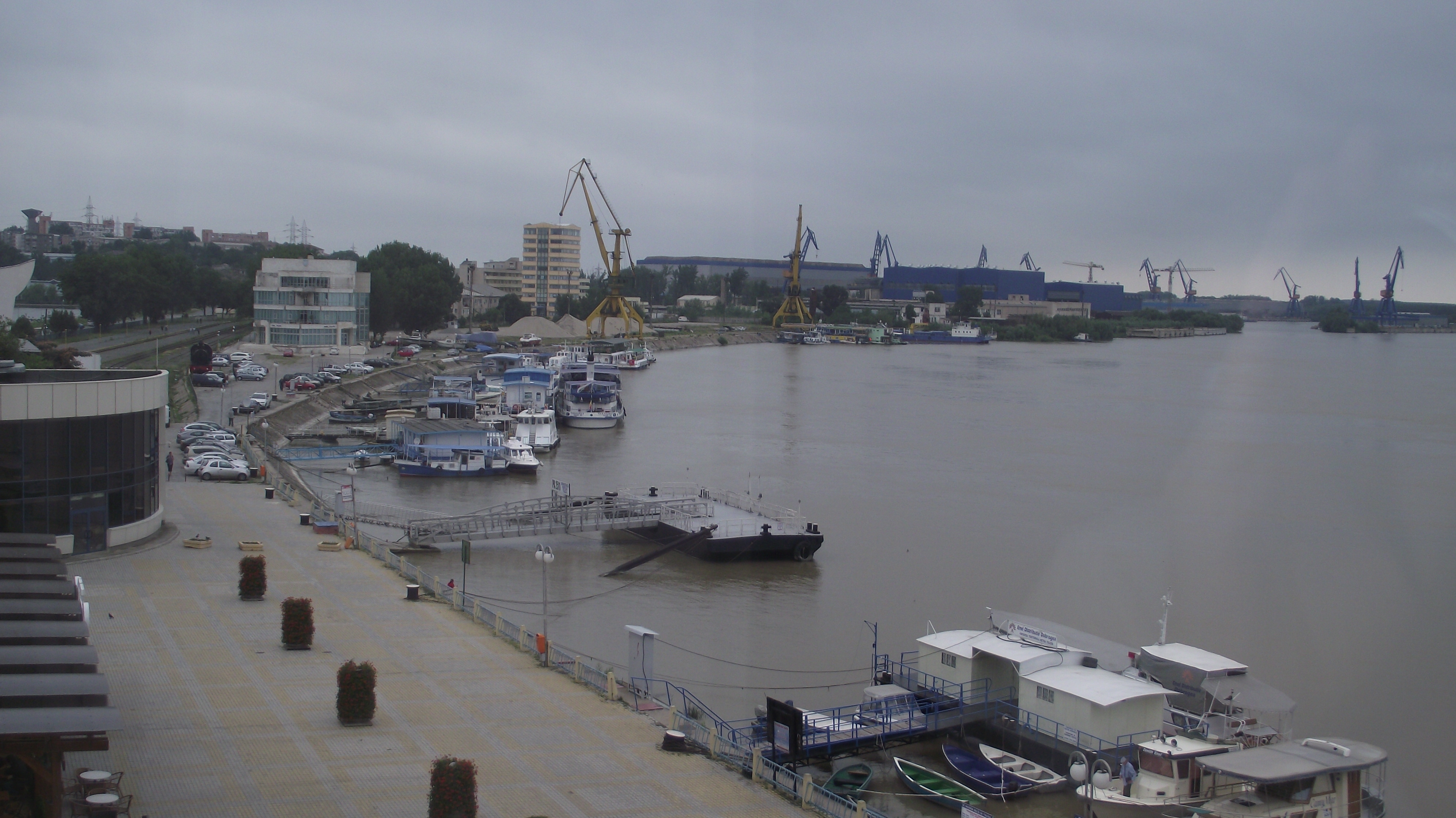
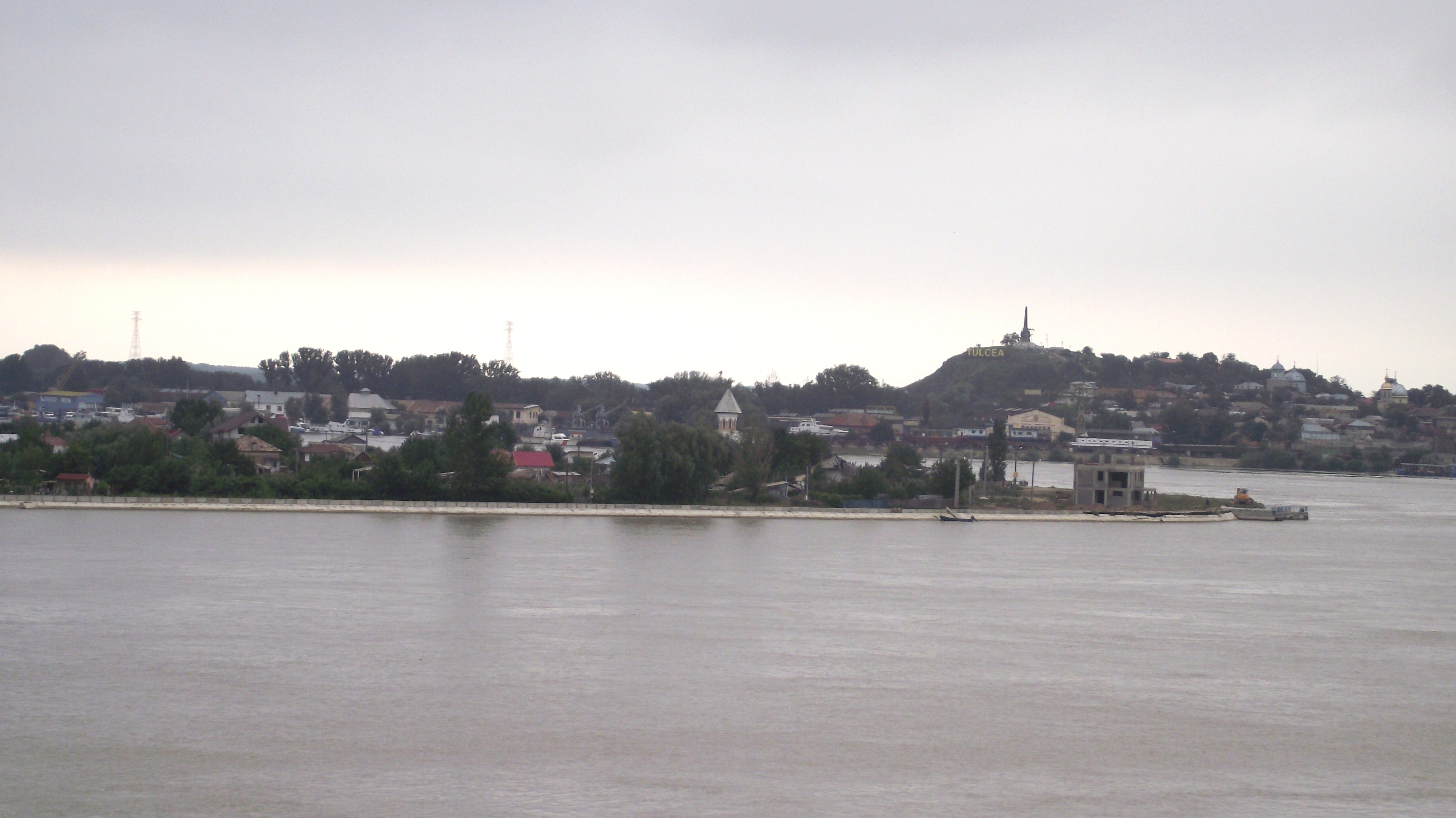
The next day, we have visited the Danube Delta Museum in Tulcea and other sites.
Afterwards, we took a boat to one of the three main channels through which the Danube goes to the end of its long journey and meets the Black Sea.
The Danube Delta Museum:
Afterwards, we took a boat to one of the three main channels through which the Danube goes to the end of its long journey and meets the Black Sea.
The Danube Delta Museum:
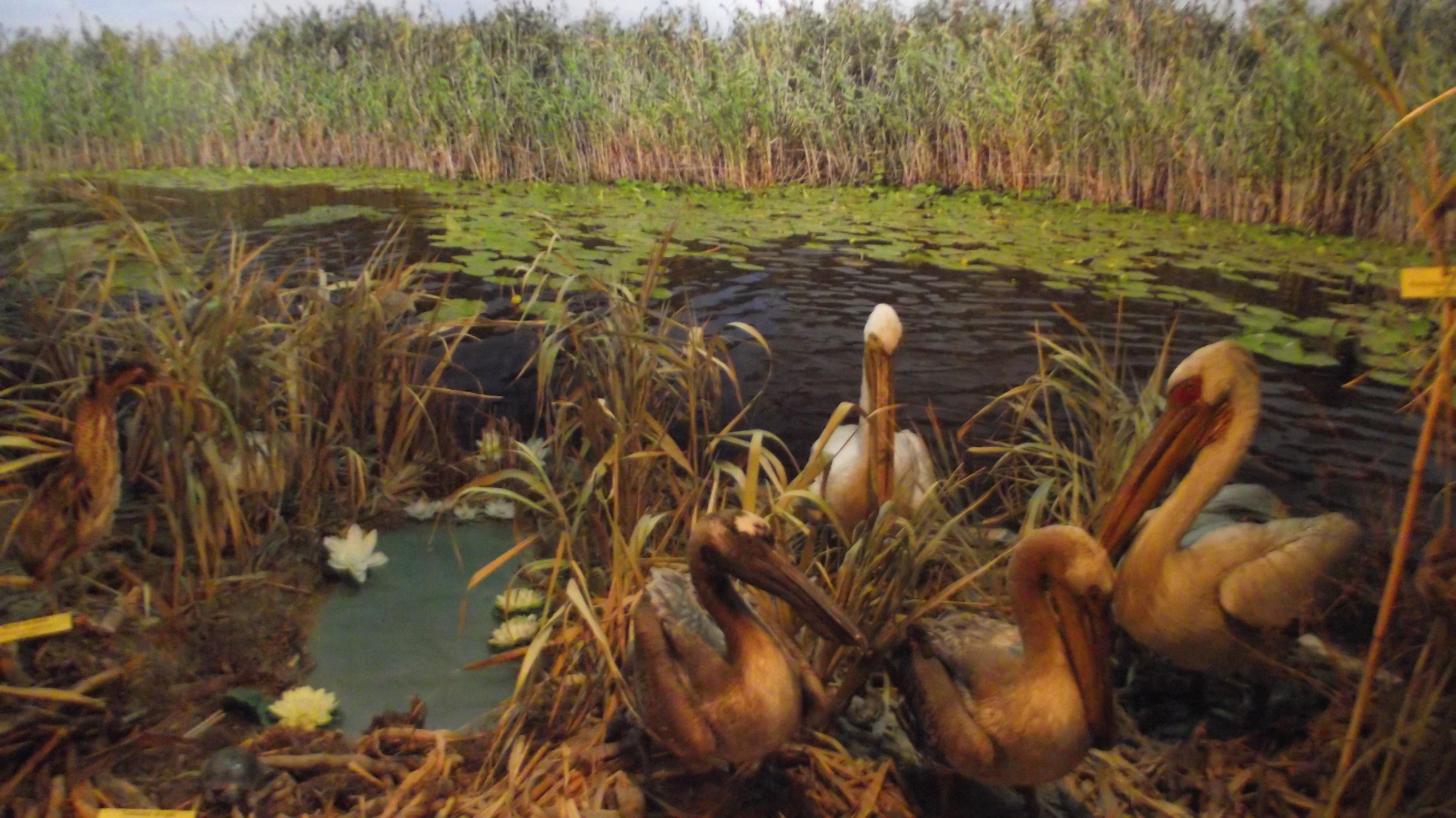
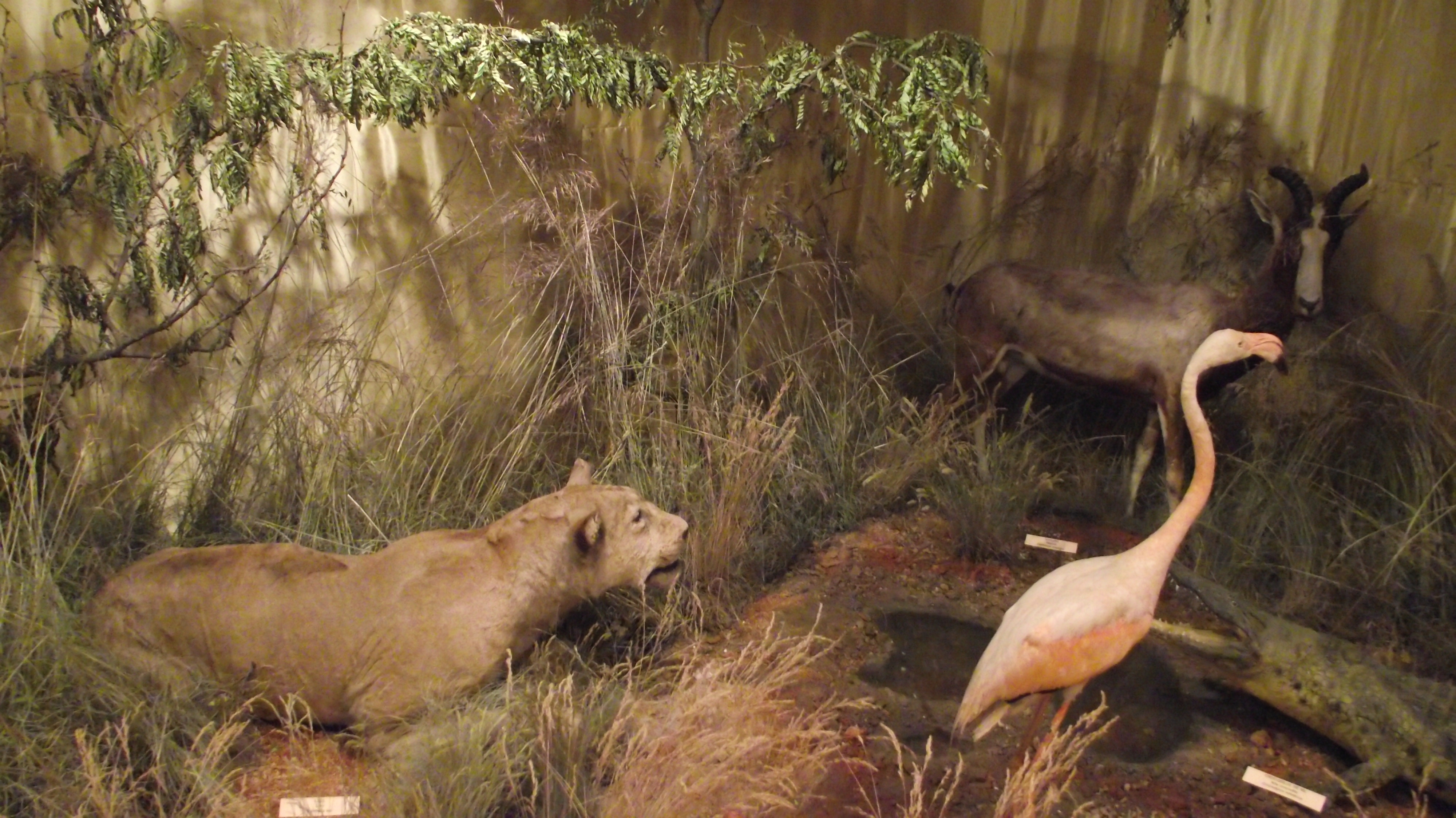
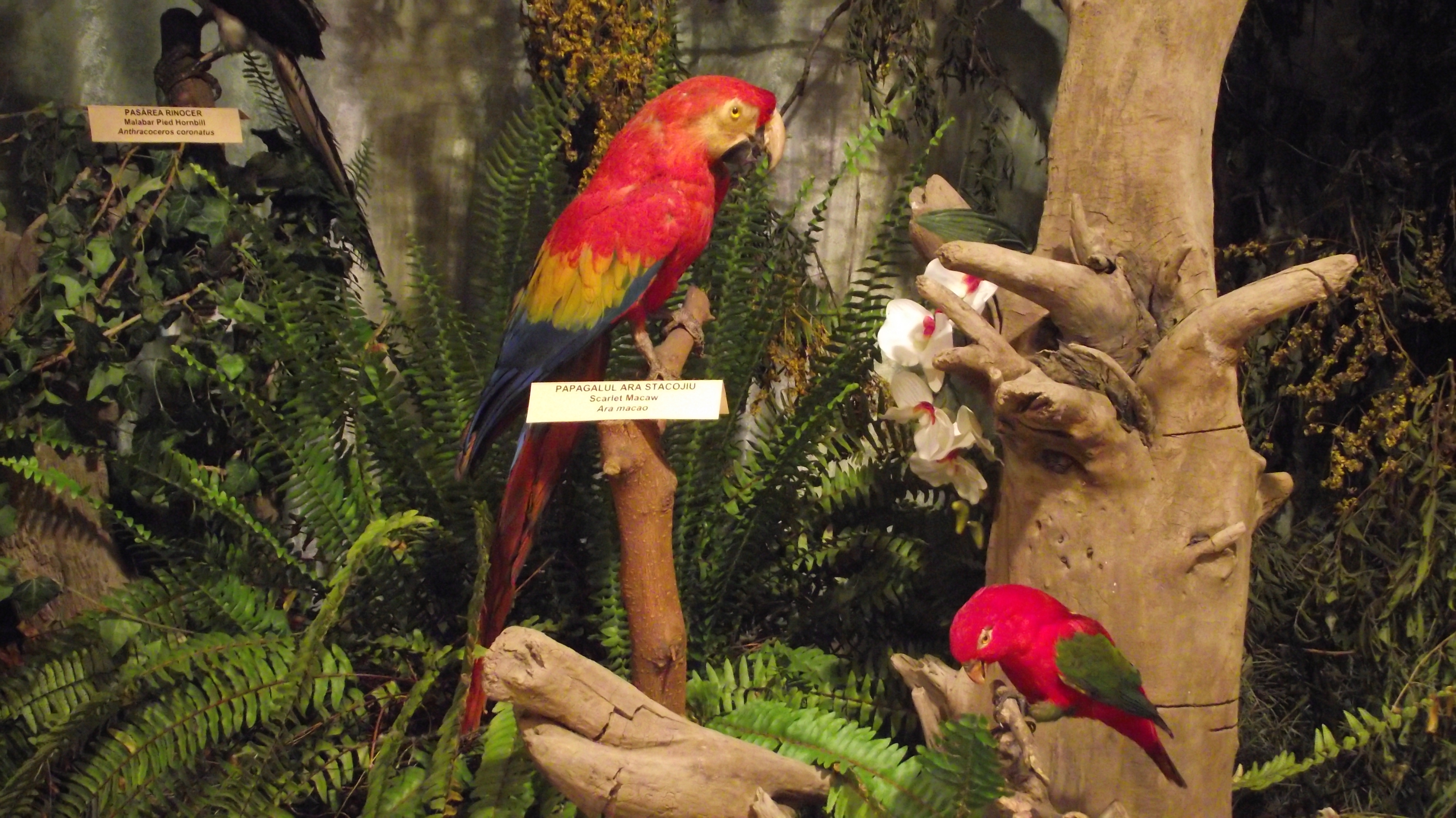
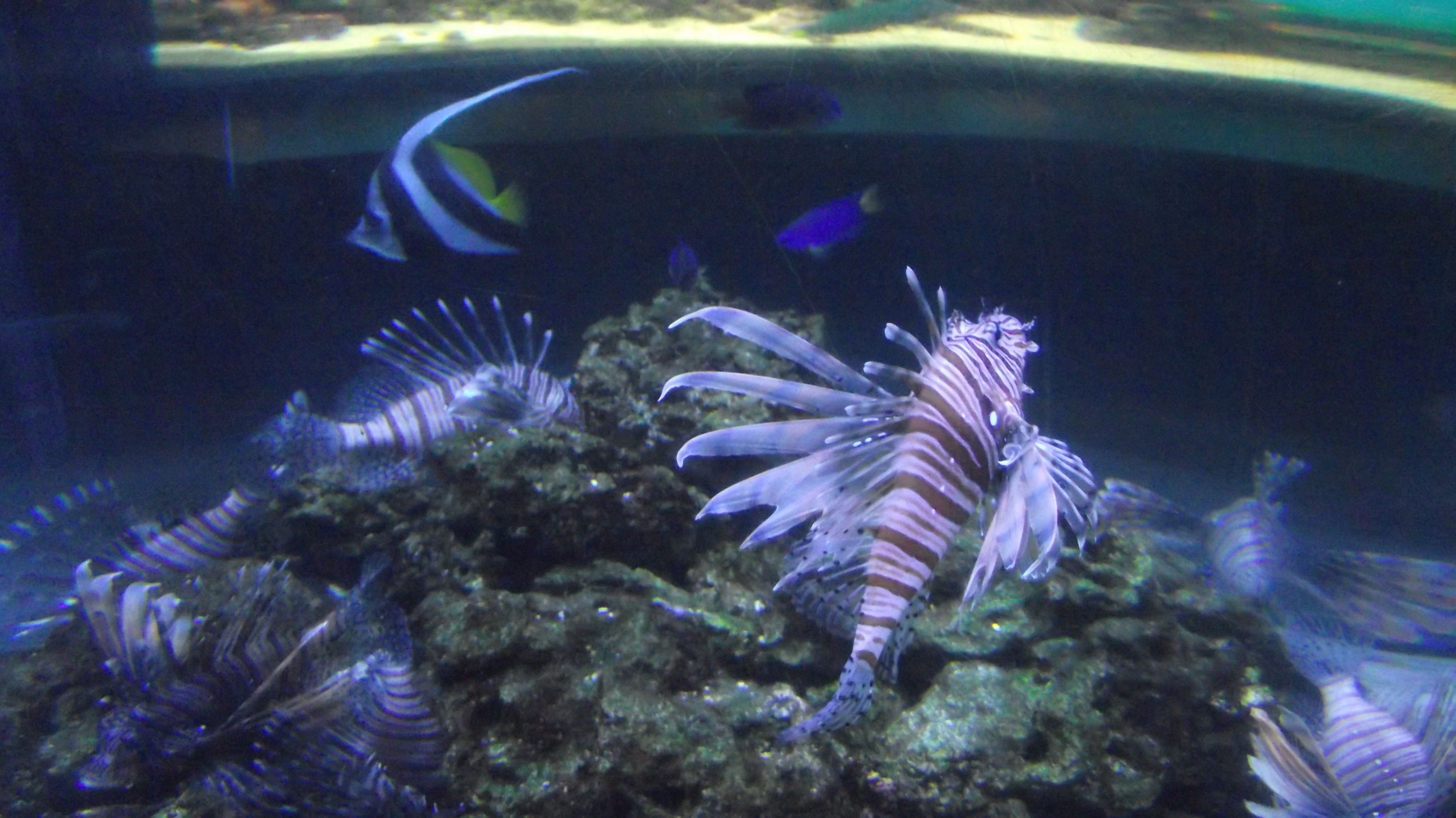
Mrs. Maria Grapini on the Danube Delta
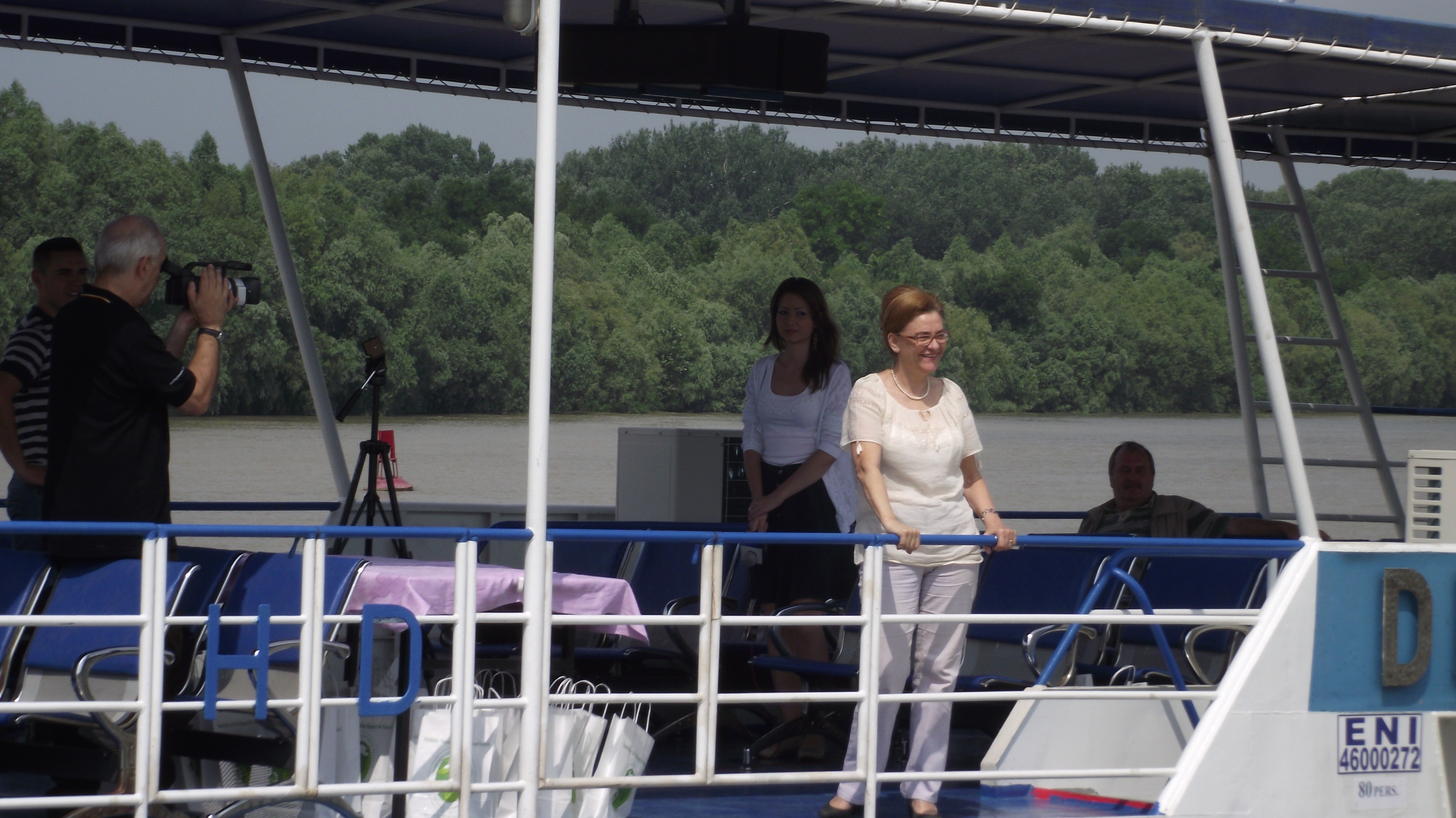
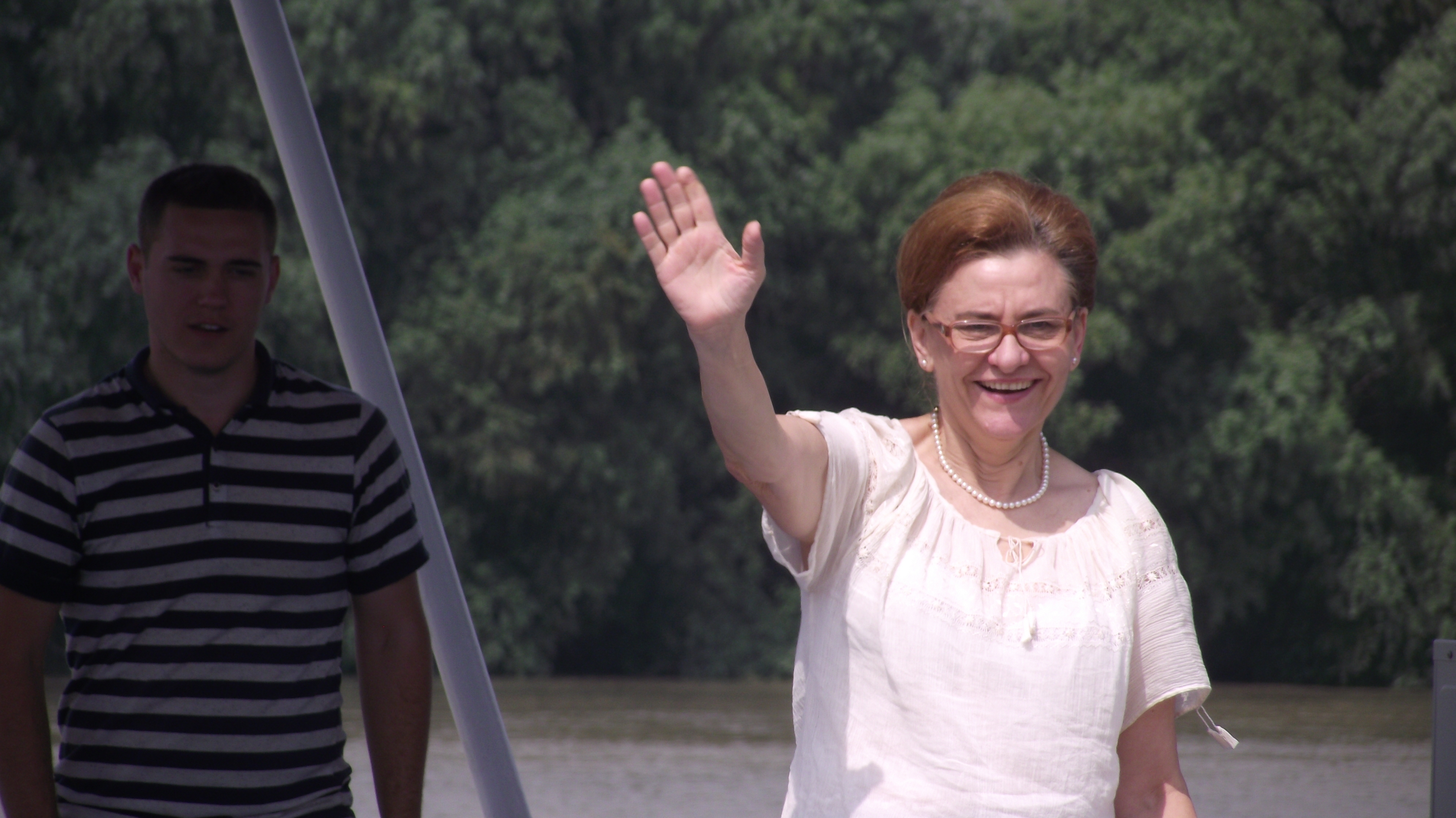
We had a break at the Puflene Resort and a very warm welcome with traditional music and dance.
This new Resort offers high quality accommodation, swimming pool and huge gardens.
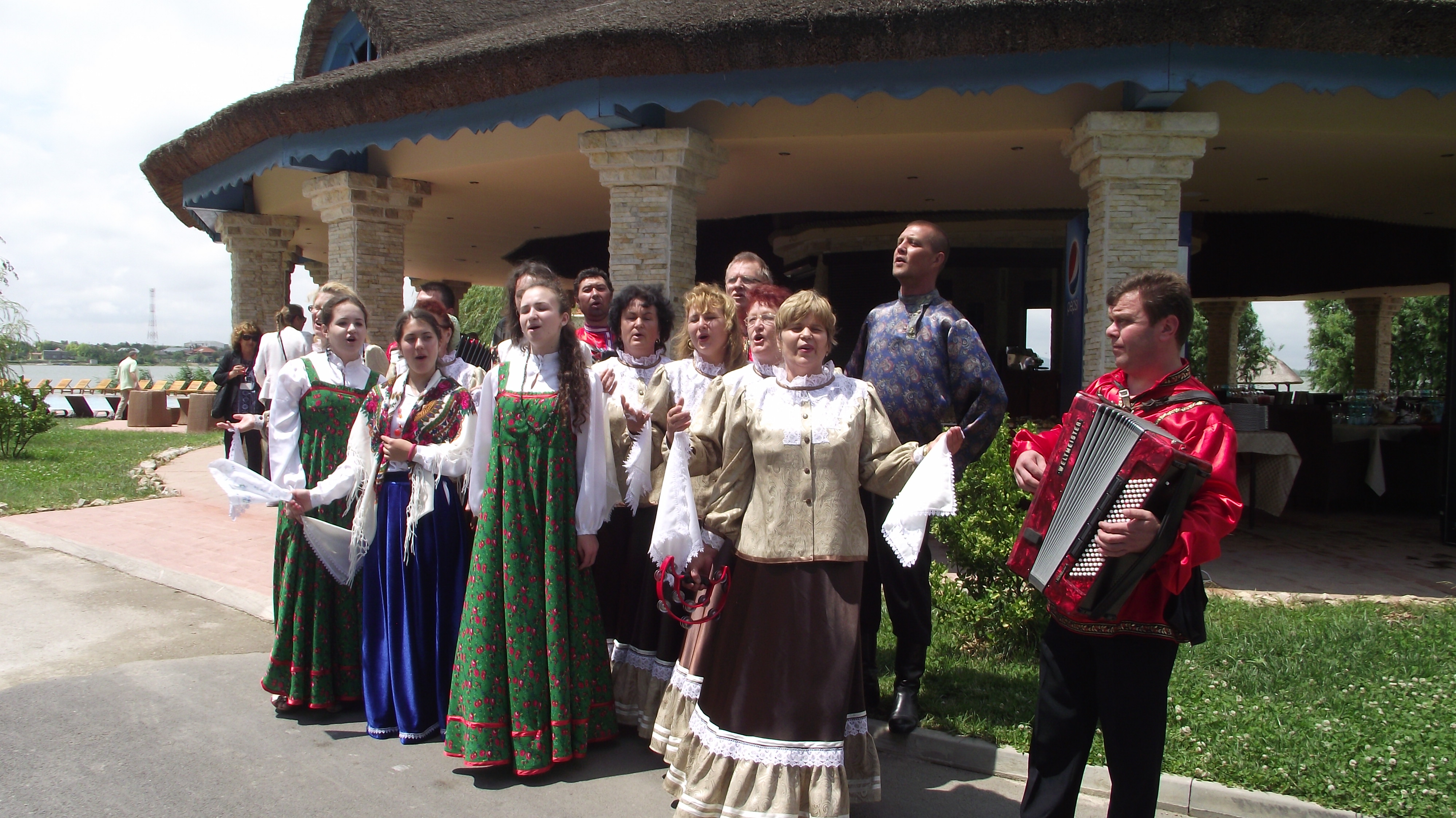
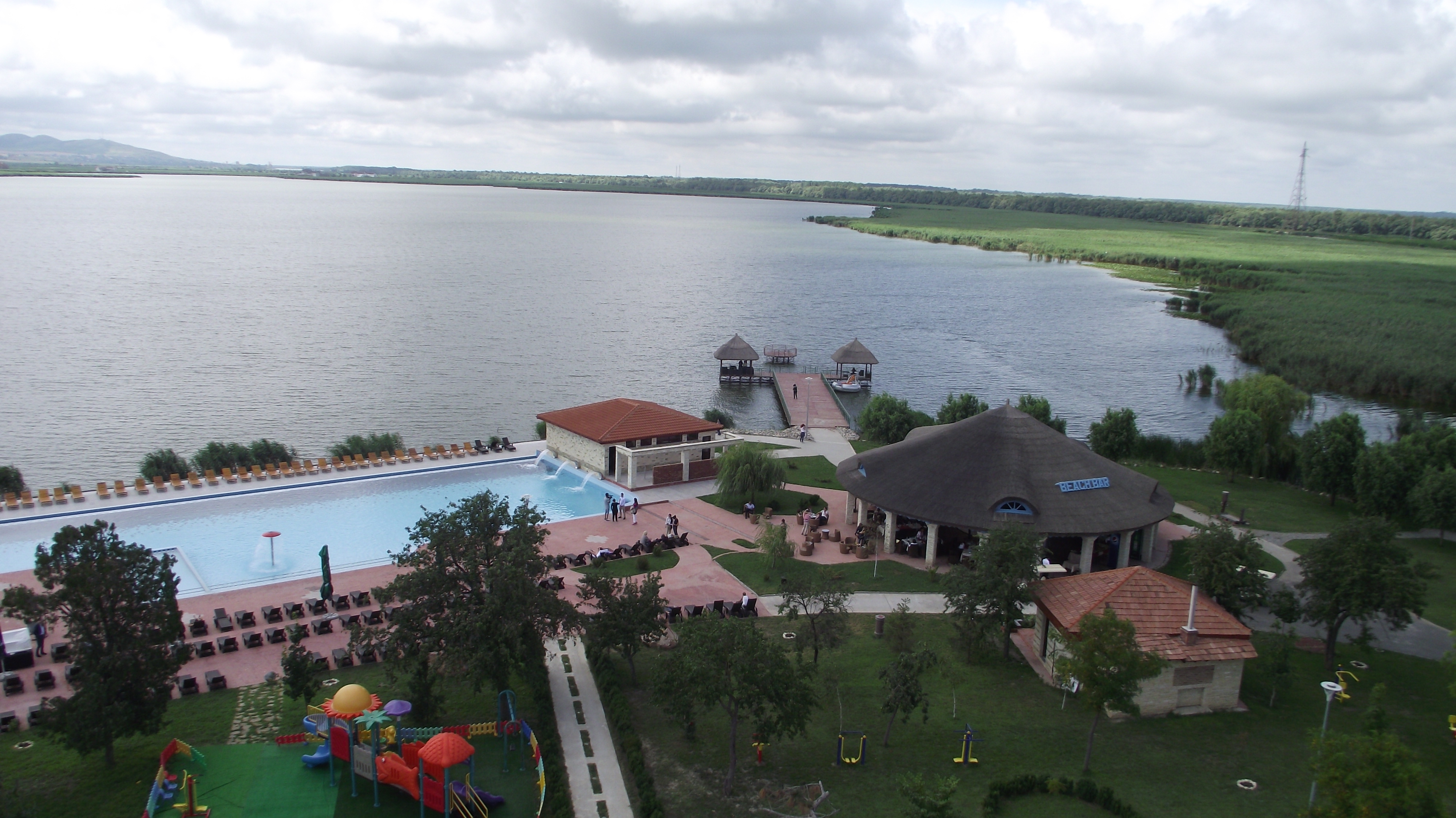
At the end of the day, on our way back to Bucharest, we admired large fields with crops and Romania's countryside.
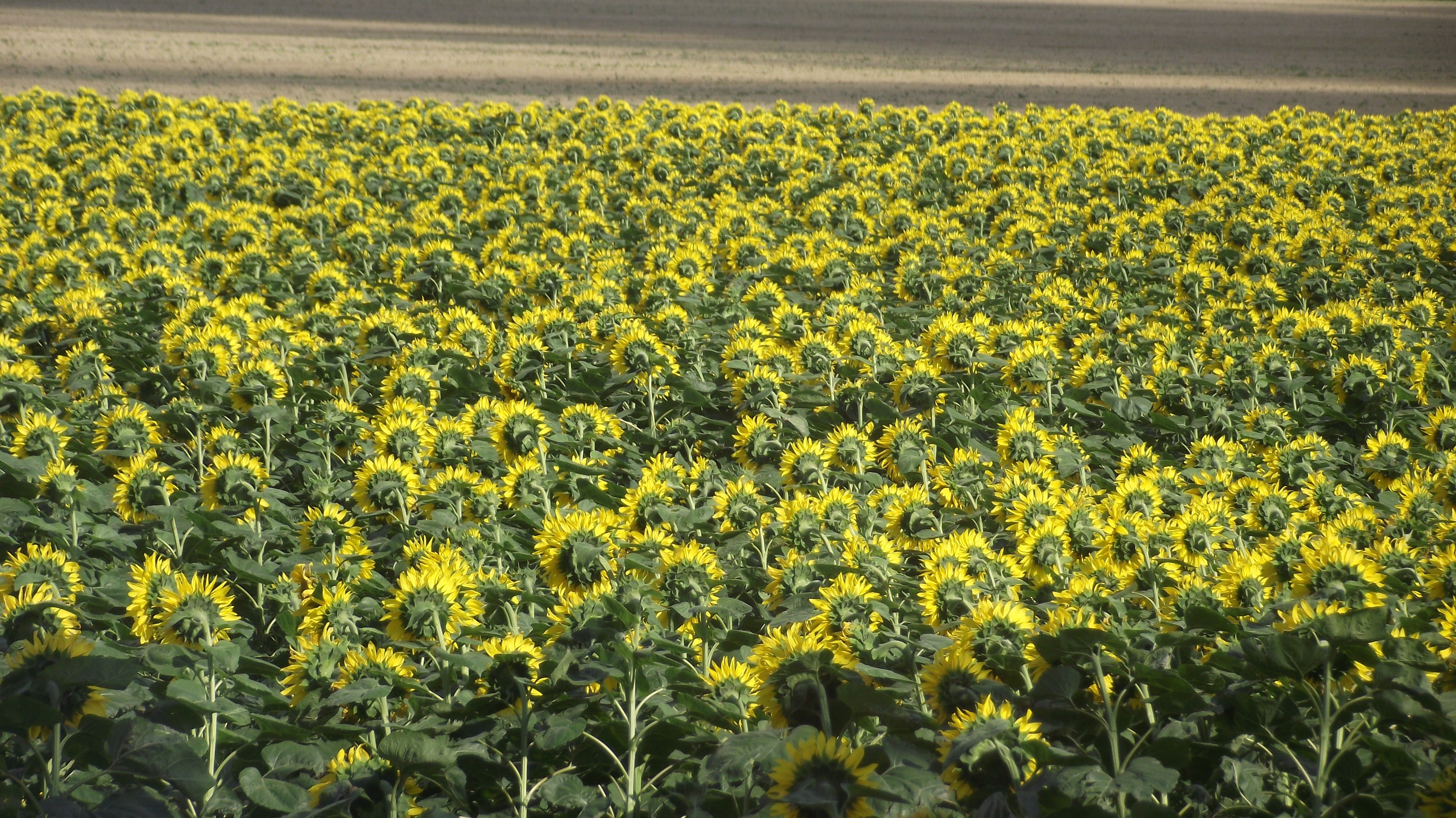
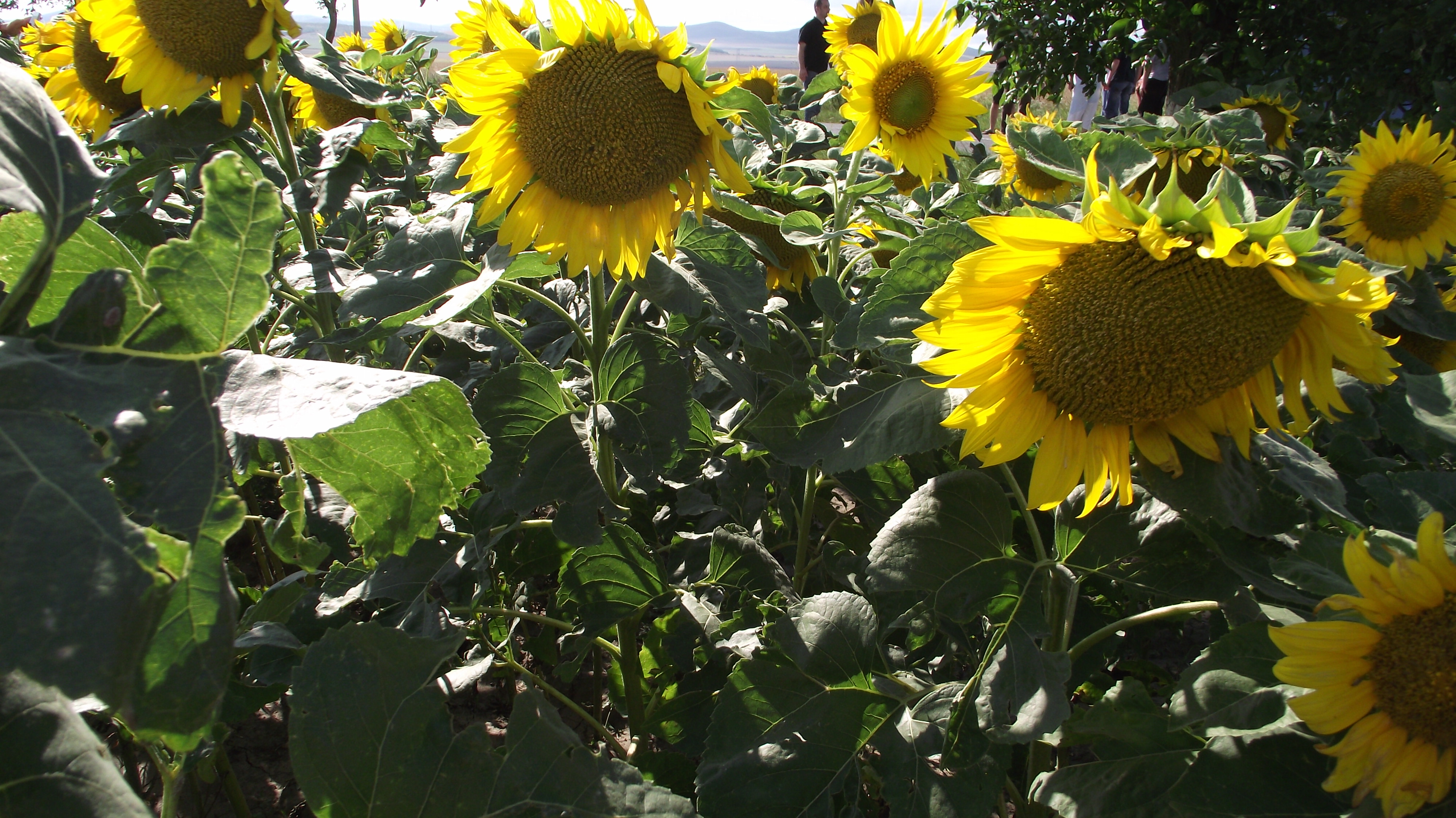
Day 4 (5.7):Sinaia, Bran and Brasov
We left Bucharest early in the morning, heading North, towards Sinaia, the Summer Residence of the Royal family of Romania.
Here we visited Peles Castle and Pelisor Castle, both located inside complex surrounded by thick forests populated with bears, among other animals.
Romania has more than 40% of the total bear population in Europe and more than 30% of Europe's wolves population, which are also protected by the law.
Pelisor castle in Sinaia
We left Bucharest early in the morning, heading North, towards Sinaia, the Summer Residence of the Royal family of Romania.
Here we visited Peles Castle and Pelisor Castle, both located inside complex surrounded by thick forests populated with bears, among other animals.
Romania has more than 40% of the total bear population in Europe and more than 30% of Europe's wolves population, which are also protected by the law.
Pelisor castle in Sinaia
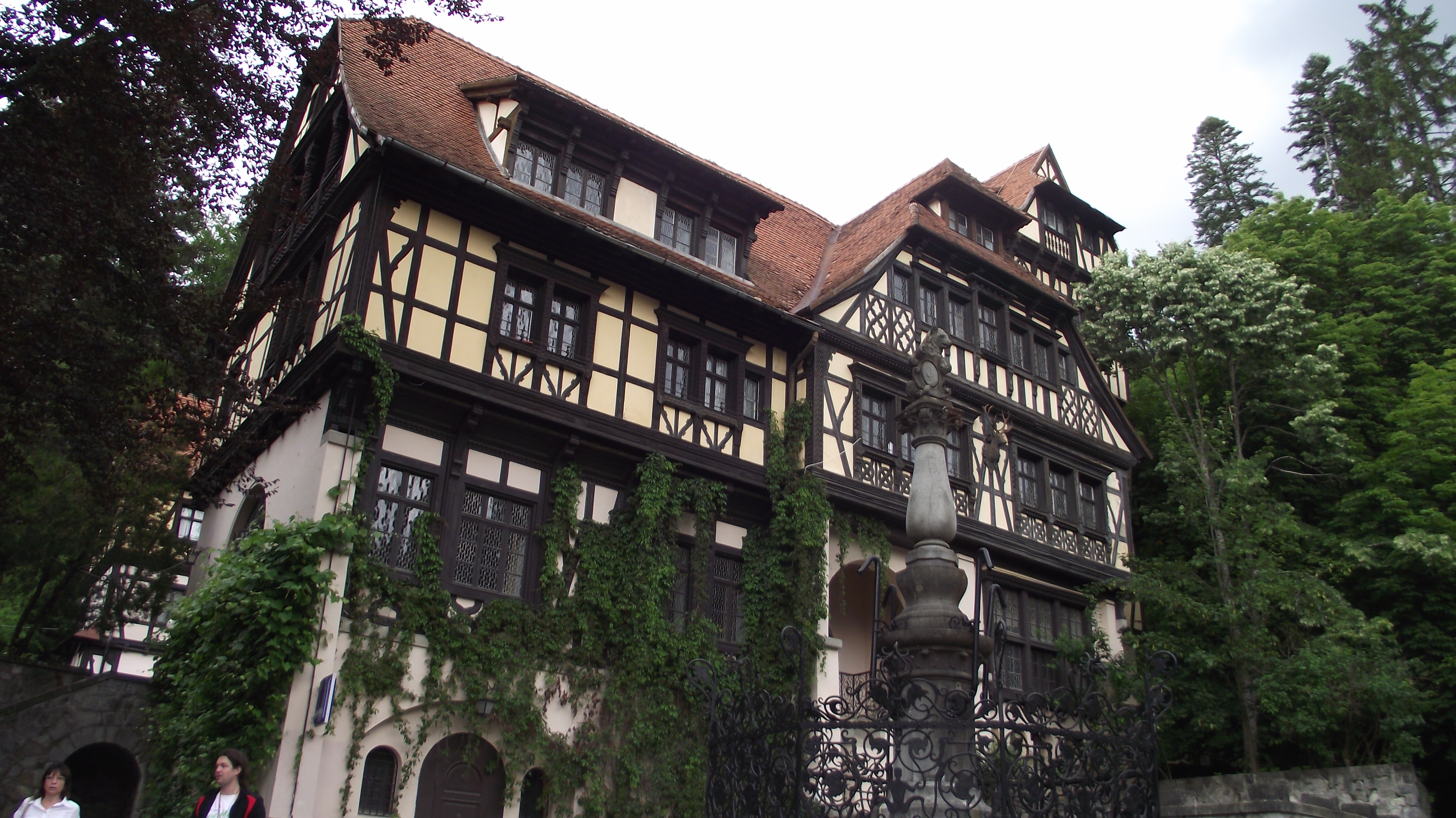
Peles castle in Sinaia
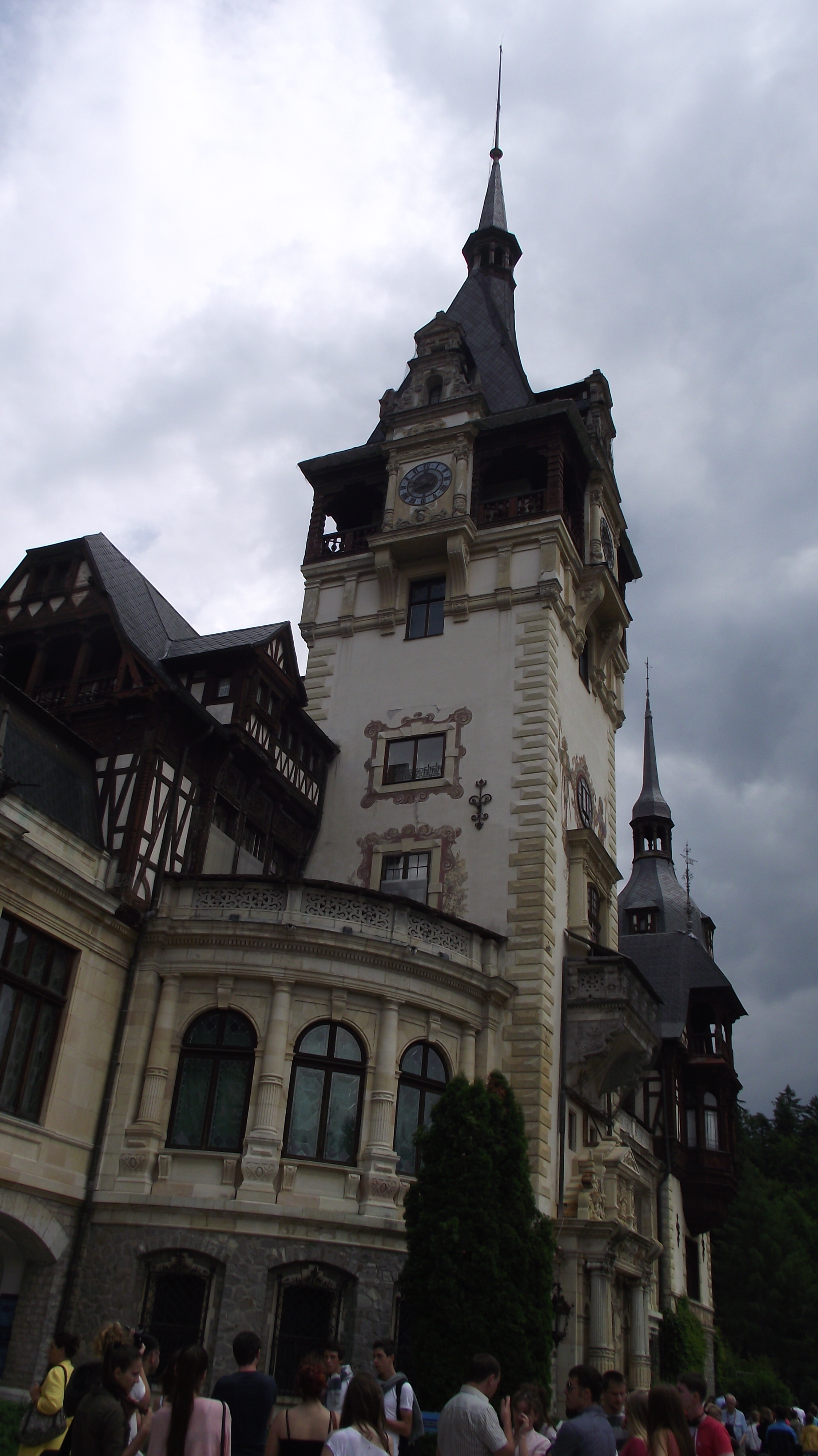
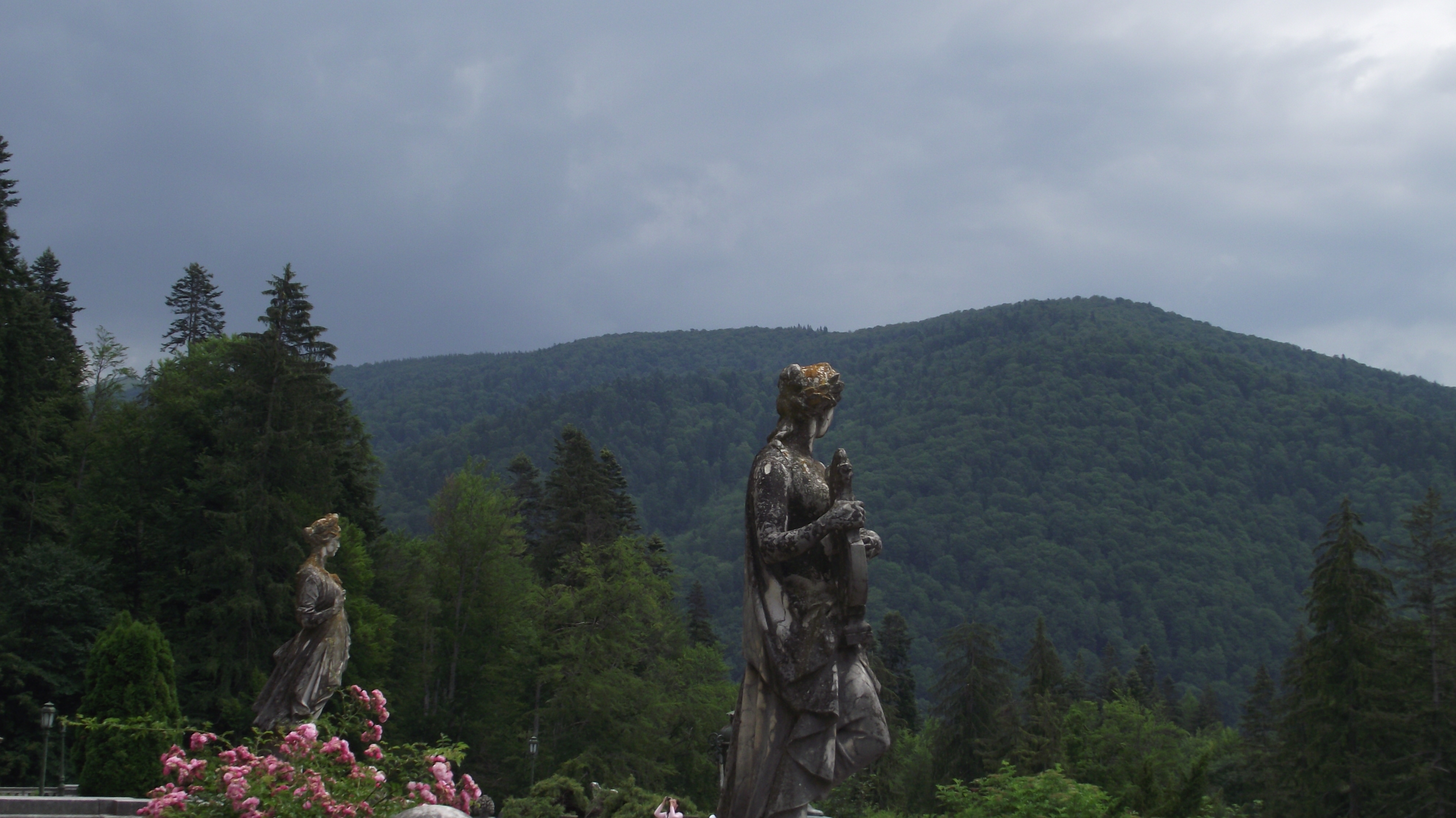
Leaving Sinaia behind us, we headed North, towards Brasov, third largest city in Romania,
after Bucharest and the Black Sea harbor of Constanta.
We have stopped to Bran and visited the famous castle known as Dracula's Castle.
The only connection to Dracula is that the bloody Romanian leader, Vlad Tepes, or Vlad the Impaler, also known as Vlad Dracul, used to spend the night in Bran Castle on his way to Transilvania. However, Vlad Tepes never owned the Castle, but some of his bloody actions might have happened here...
after Bucharest and the Black Sea harbor of Constanta.
We have stopped to Bran and visited the famous castle known as Dracula's Castle.
The only connection to Dracula is that the bloody Romanian leader, Vlad Tepes, or Vlad the Impaler, also known as Vlad Dracul, used to spend the night in Bran Castle on his way to Transilvania. However, Vlad Tepes never owned the Castle, but some of his bloody actions might have happened here...
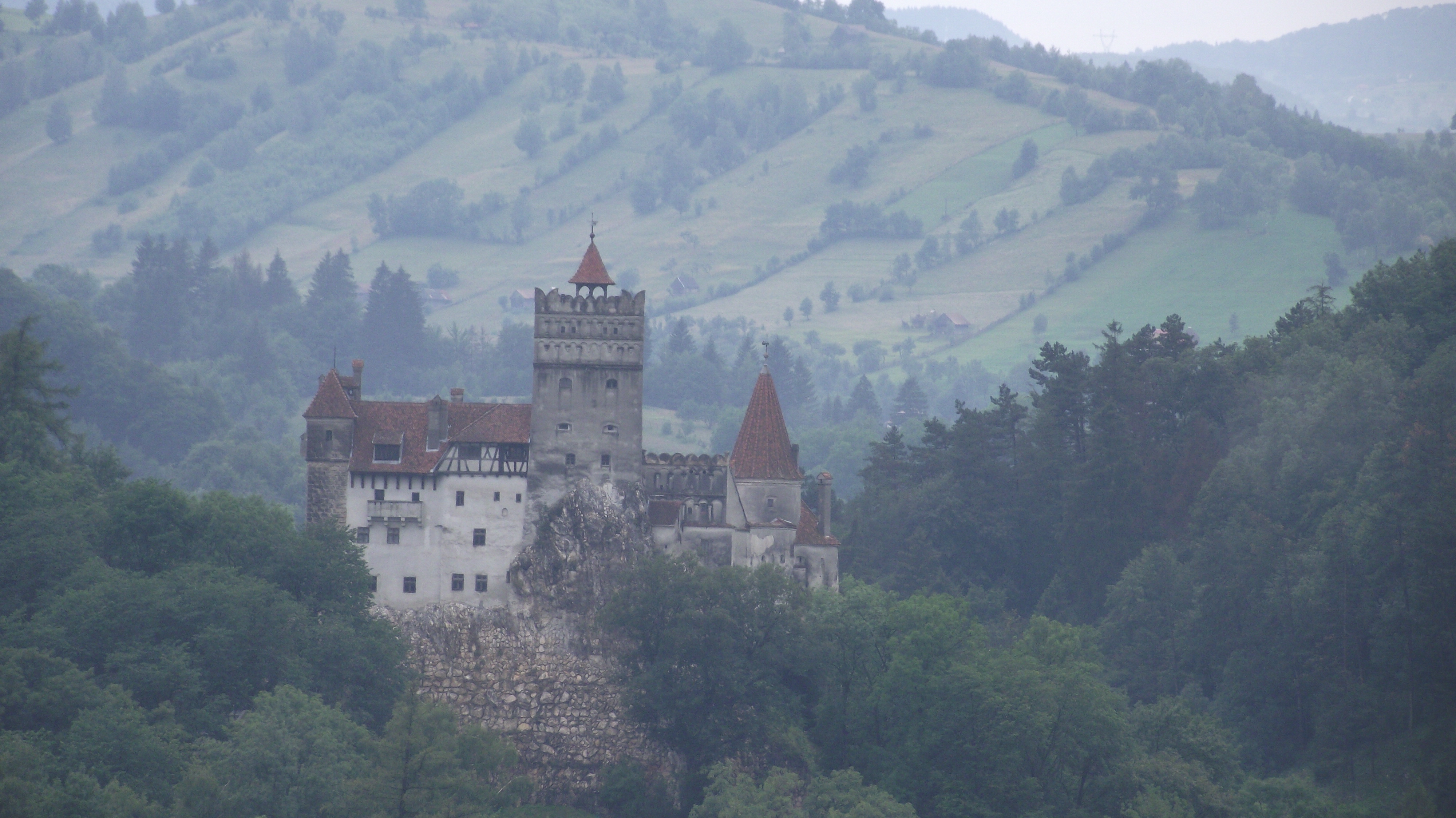
Vlad Tepes (Dracula)
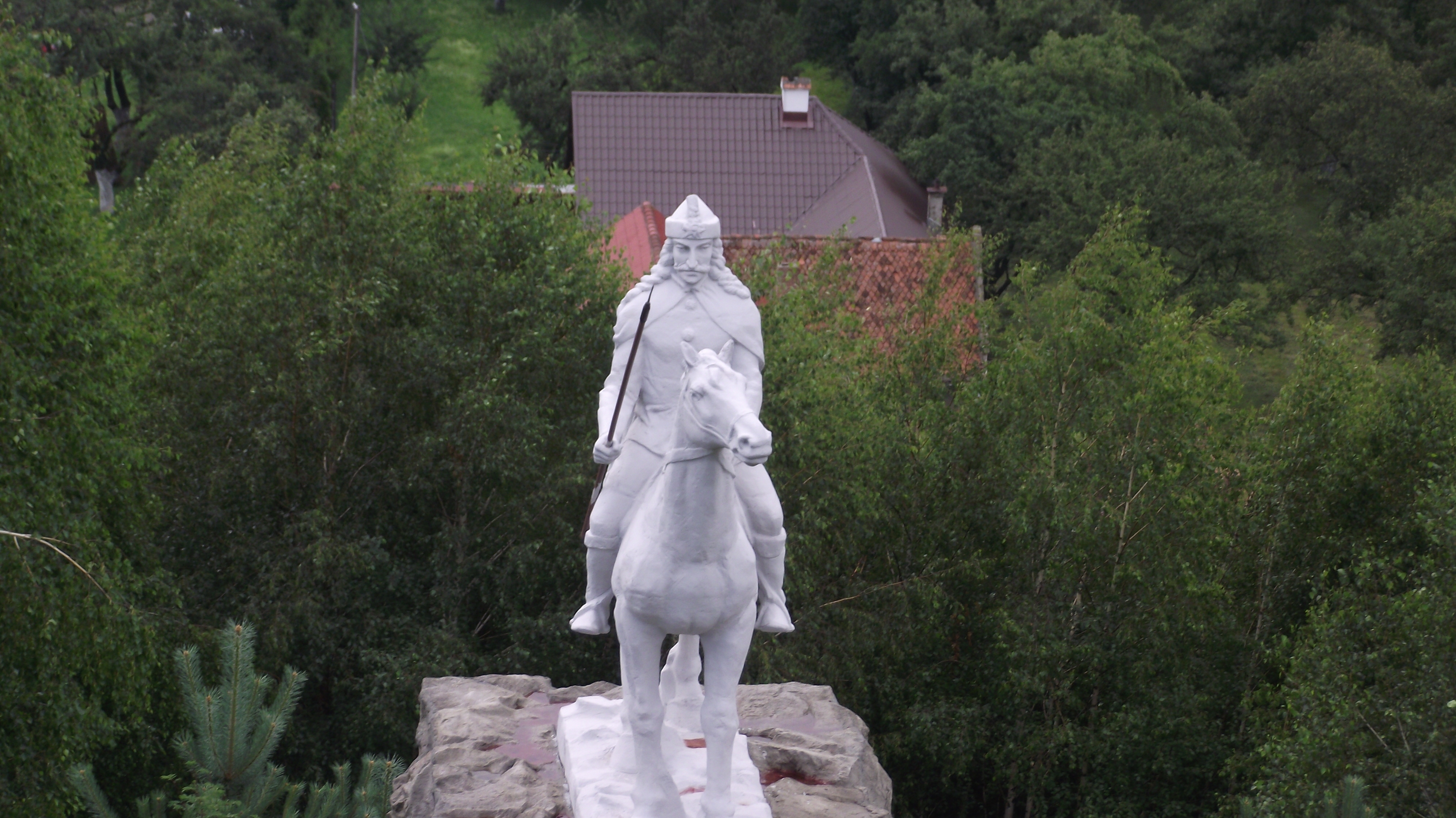
Bran castle-Entrance
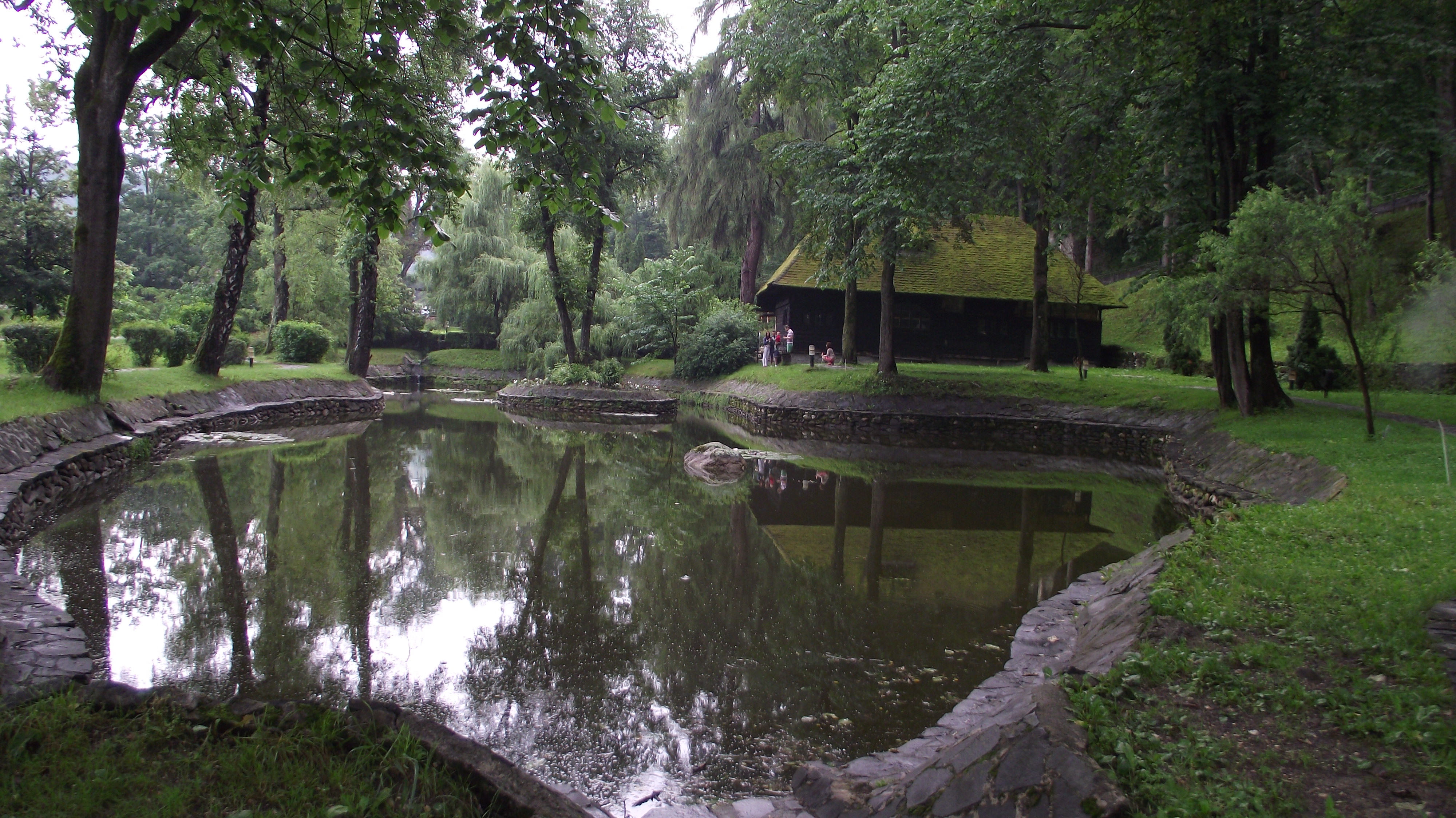
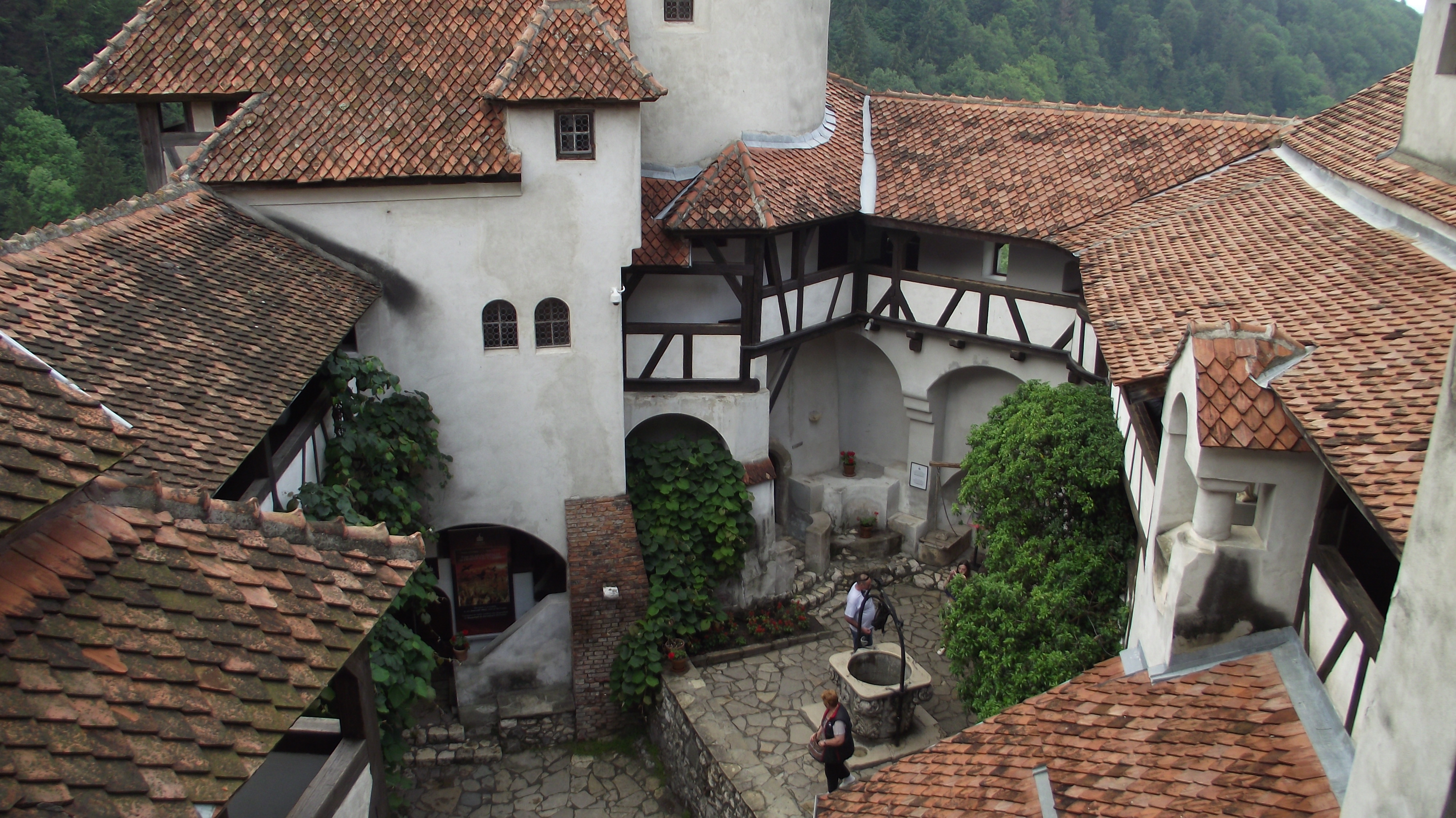
The castle is surrounded by magnificent landscapes overviewing the village, and nowadays, it is also offered by its private owners as the scary venue for weddings or other important events that need a special celebration.
The beautiful view from the castle
The beautiful view from the castle
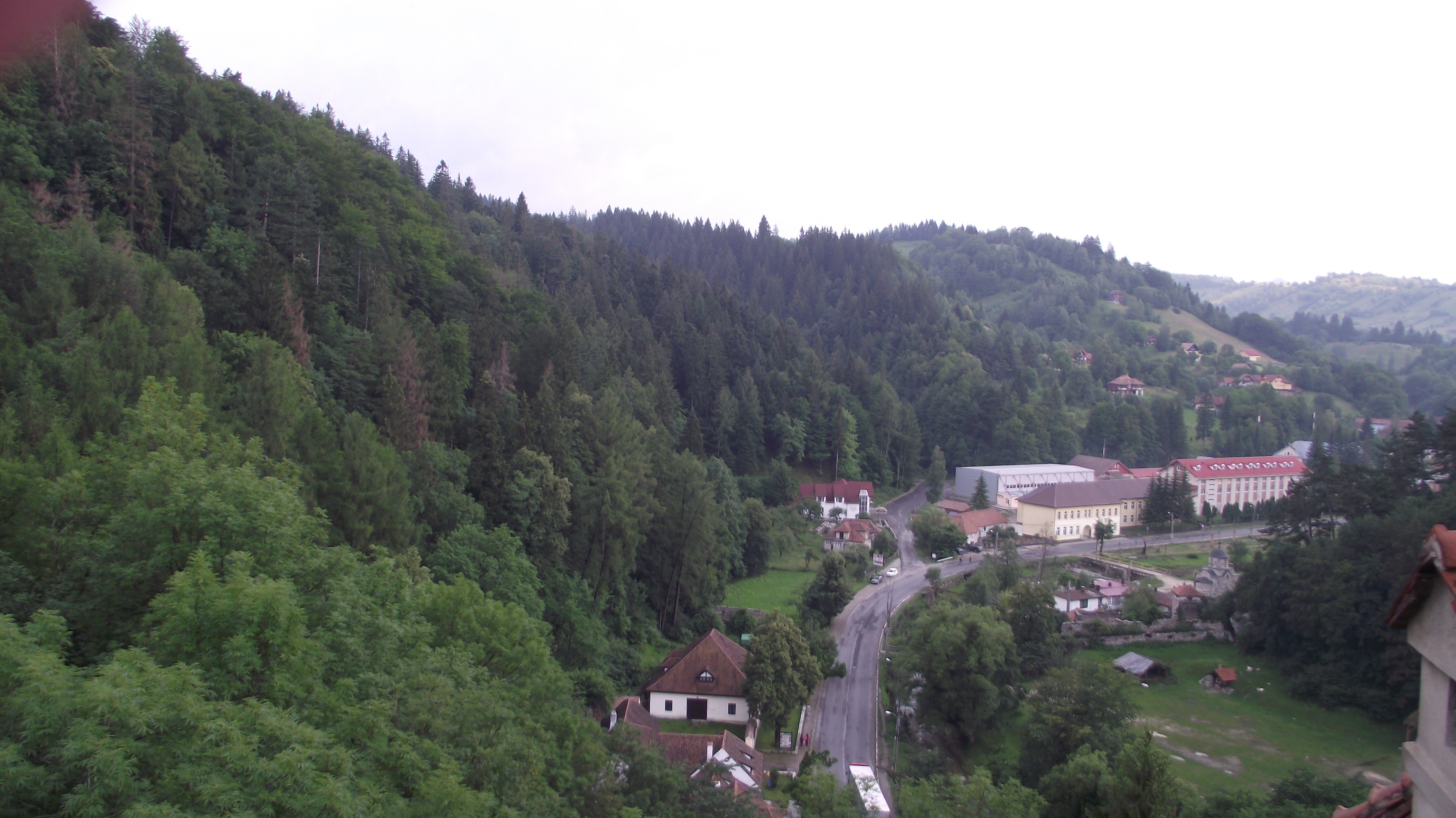
We spent the night in Brasov after a tour through its historic center which offers a wide variety of pubs, beer houses, restaurants and terraces.
Tampa mountain surrounding Brasov
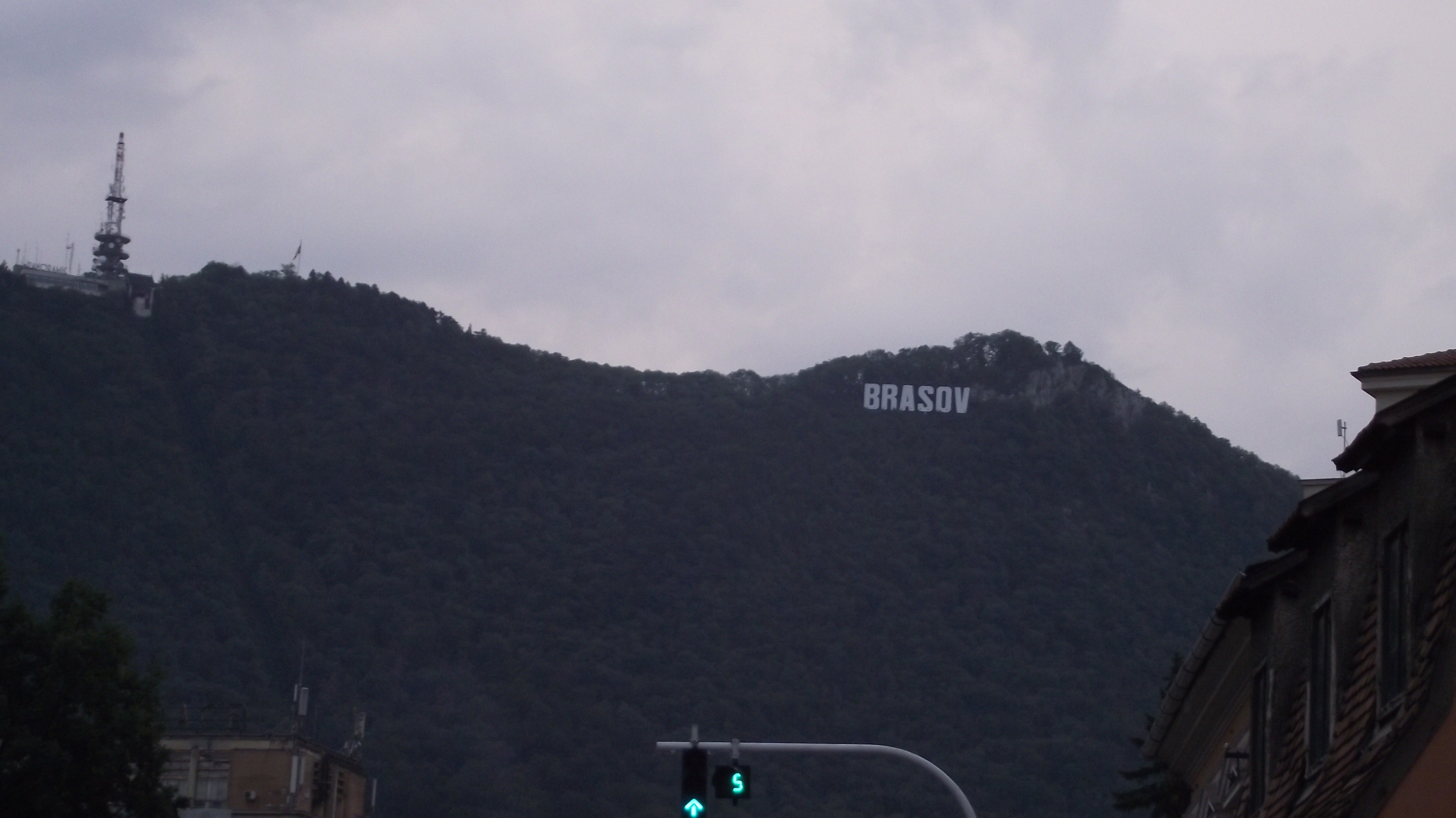
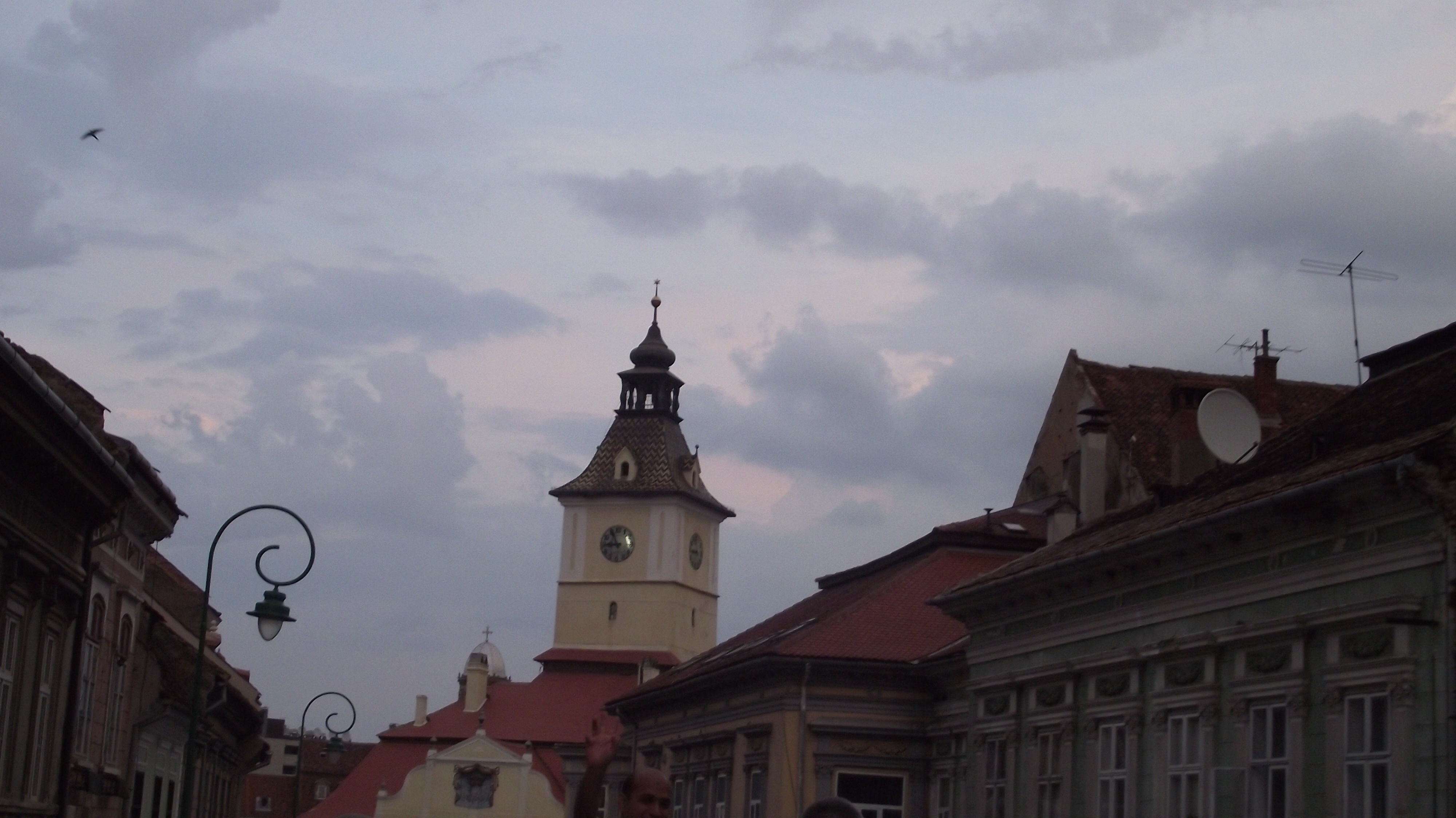
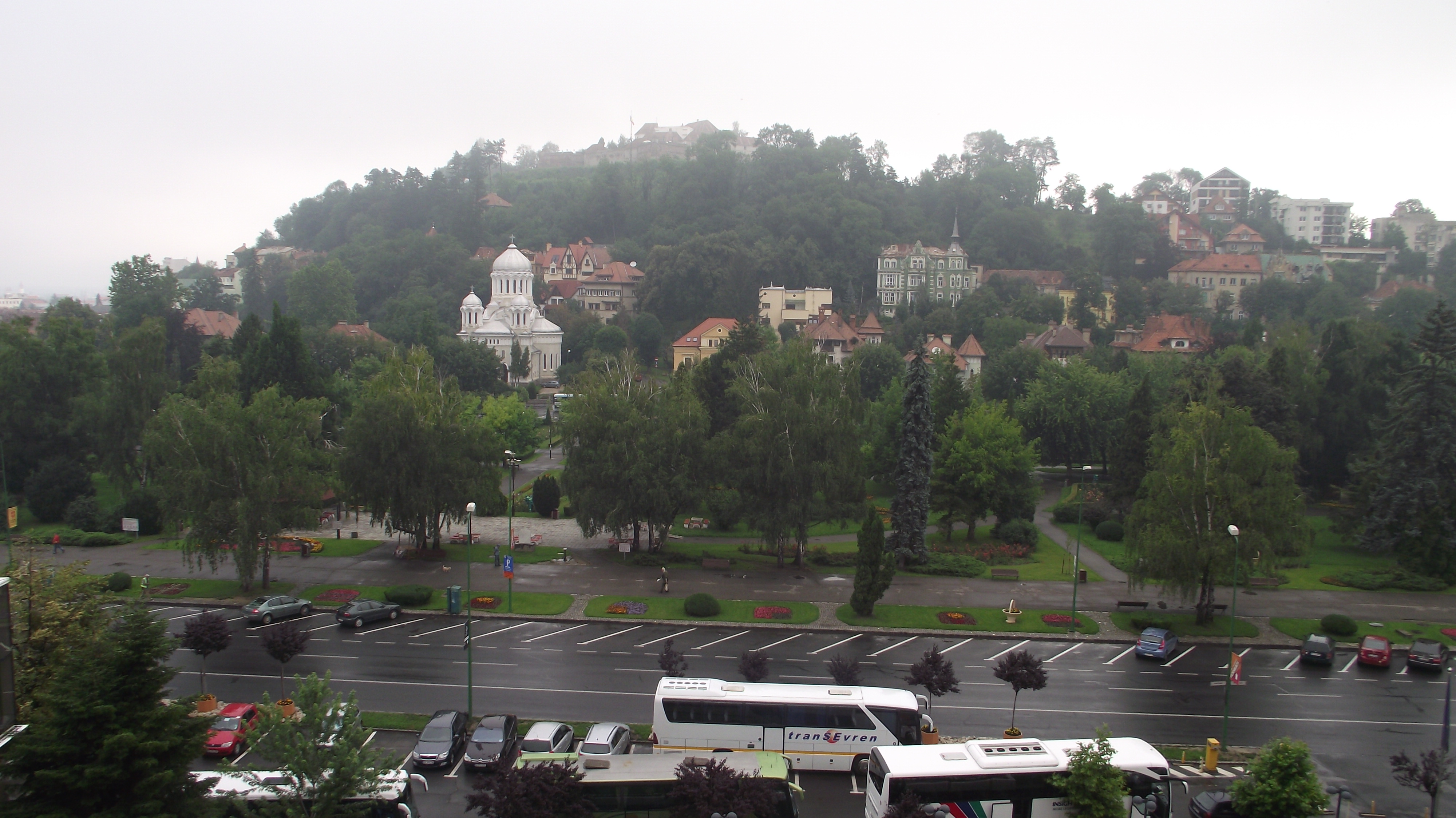
Day 5 (6.7):Prejmer,Sighisoara,Salina Turda,Alba Iulia
We left Brasov and continue exploring Transilvania, the largest geographic region of Romania.
Our first stop, Prejmer, introduced us to the notion of the "fortified village" which are in a large number in this region still populated with German descent people.
Prejmer
We left Brasov and continue exploring Transilvania, the largest geographic region of Romania.
Our first stop, Prejmer, introduced us to the notion of the "fortified village" which are in a large number in this region still populated with German descent people.
Prejmer
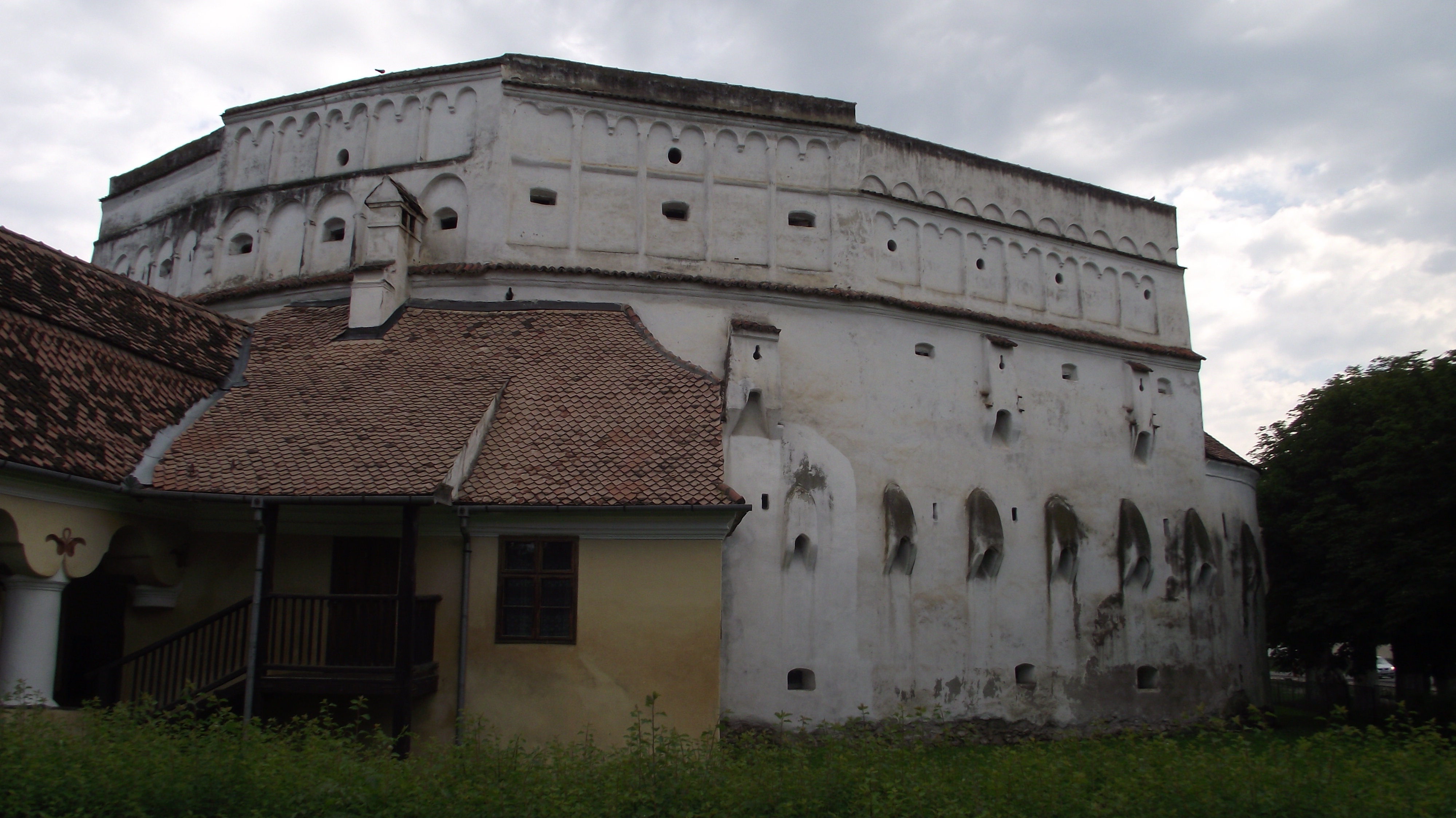
We had to Sighisoara, the only Medieval city inhabited in Europe, and one of Romania's landmarks, also Vlad Tepes's birthplace.
We took a tour of the historic centre, climbing its famous Clock Tower which offers breathtaking aerial views of the city and its surroundings.
We took a tour of the historic centre, climbing its famous Clock Tower which offers breathtaking aerial views of the city and its surroundings.
Sighisoara
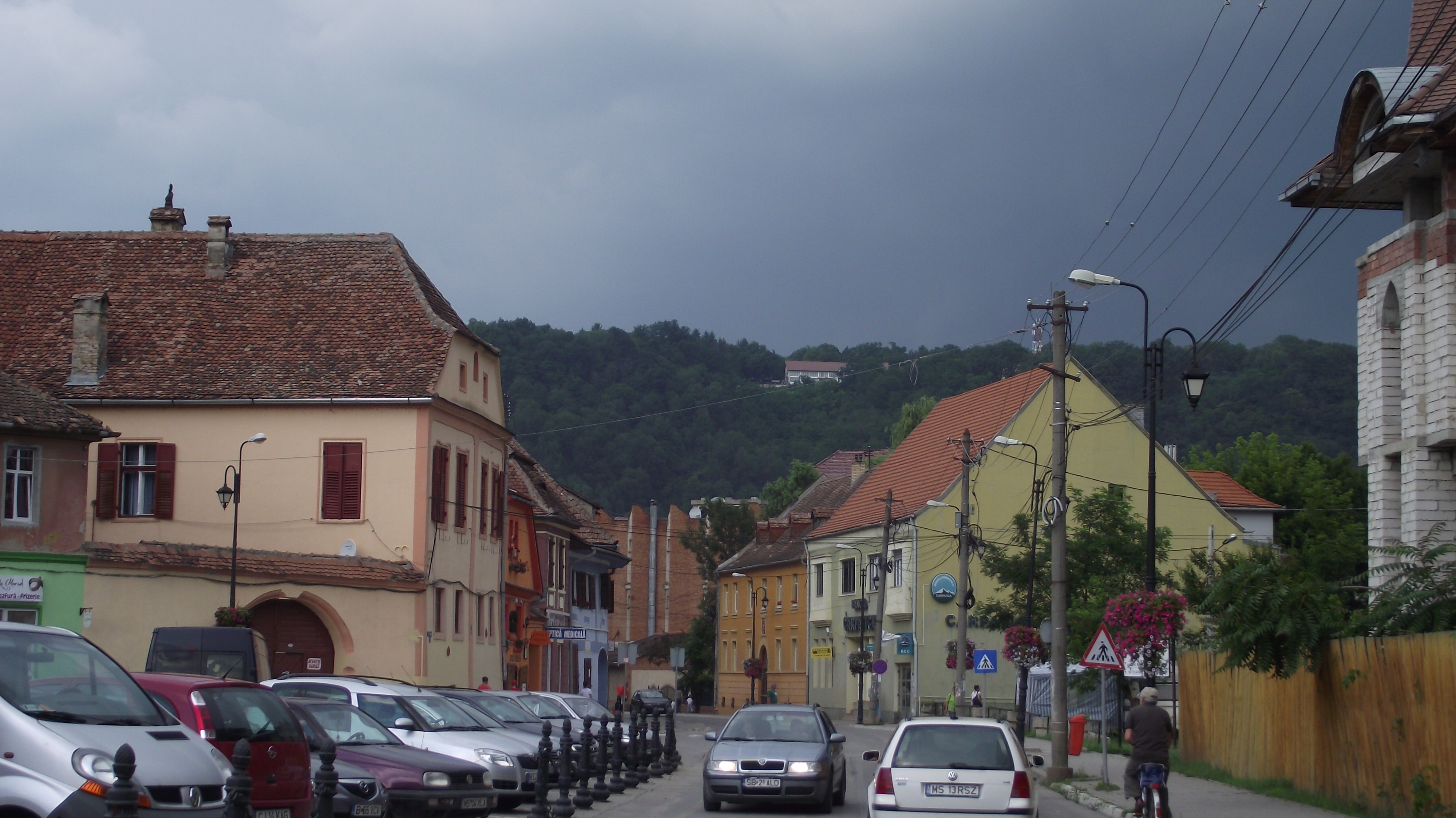
Clock Tower
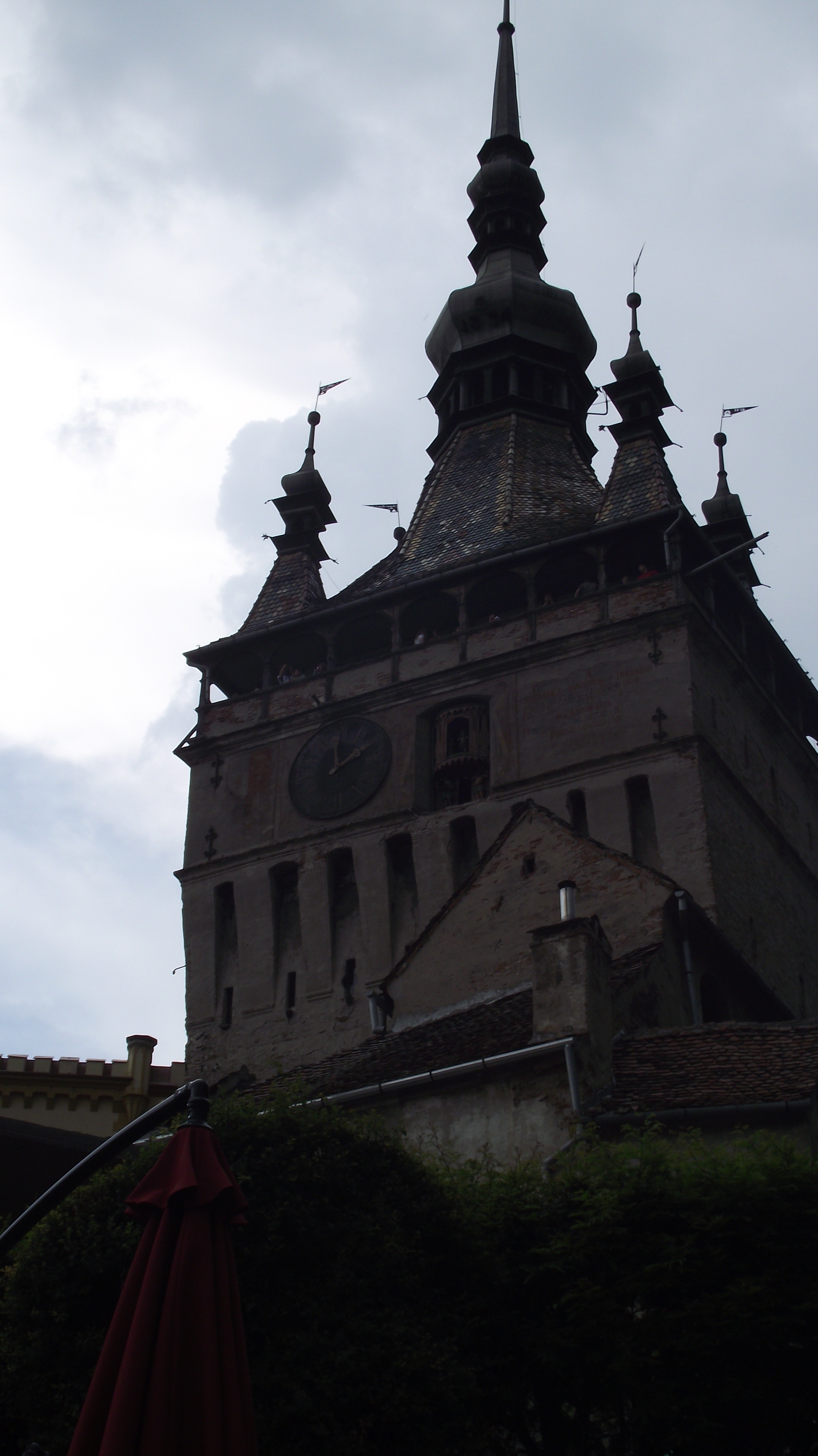
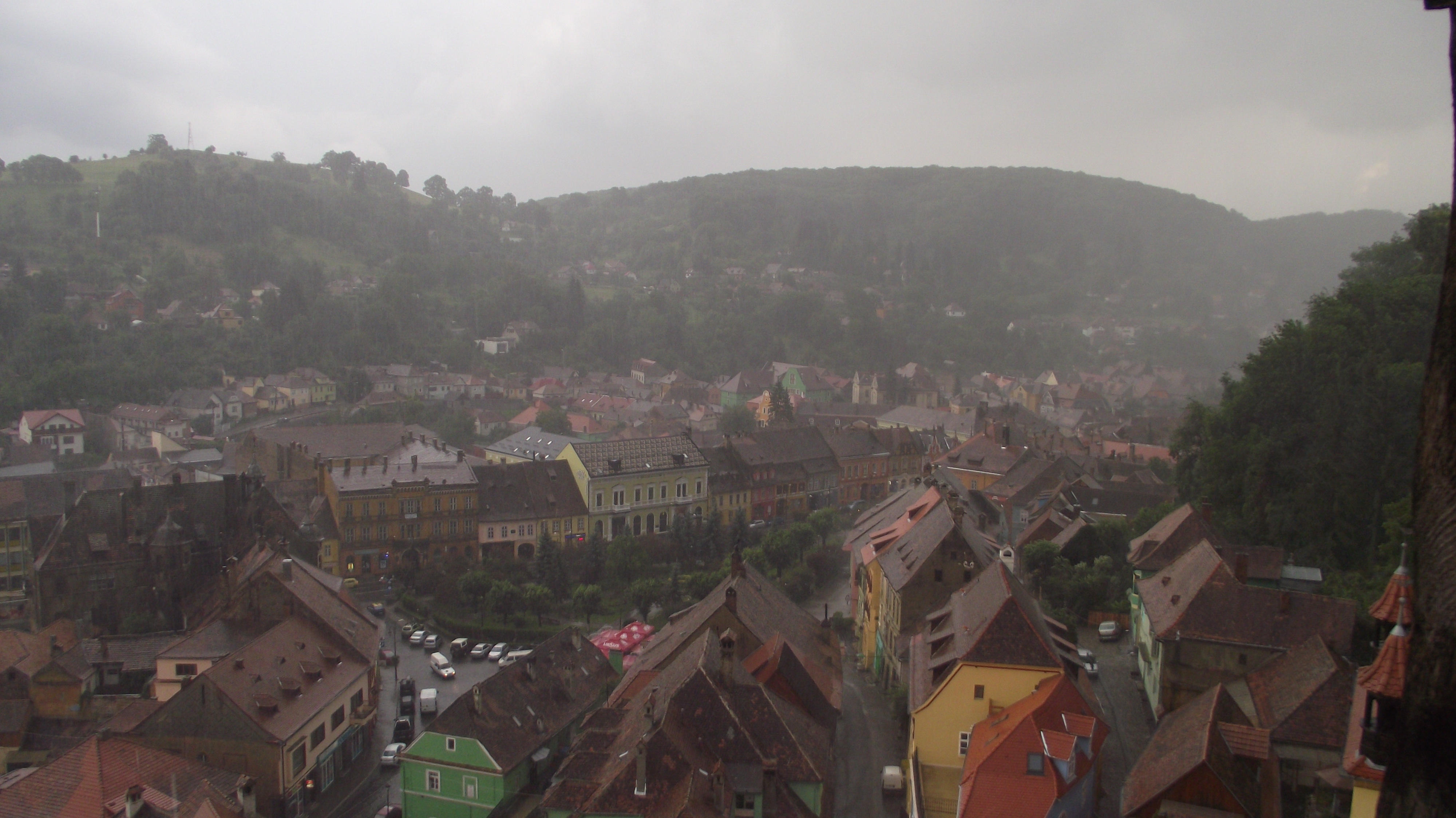
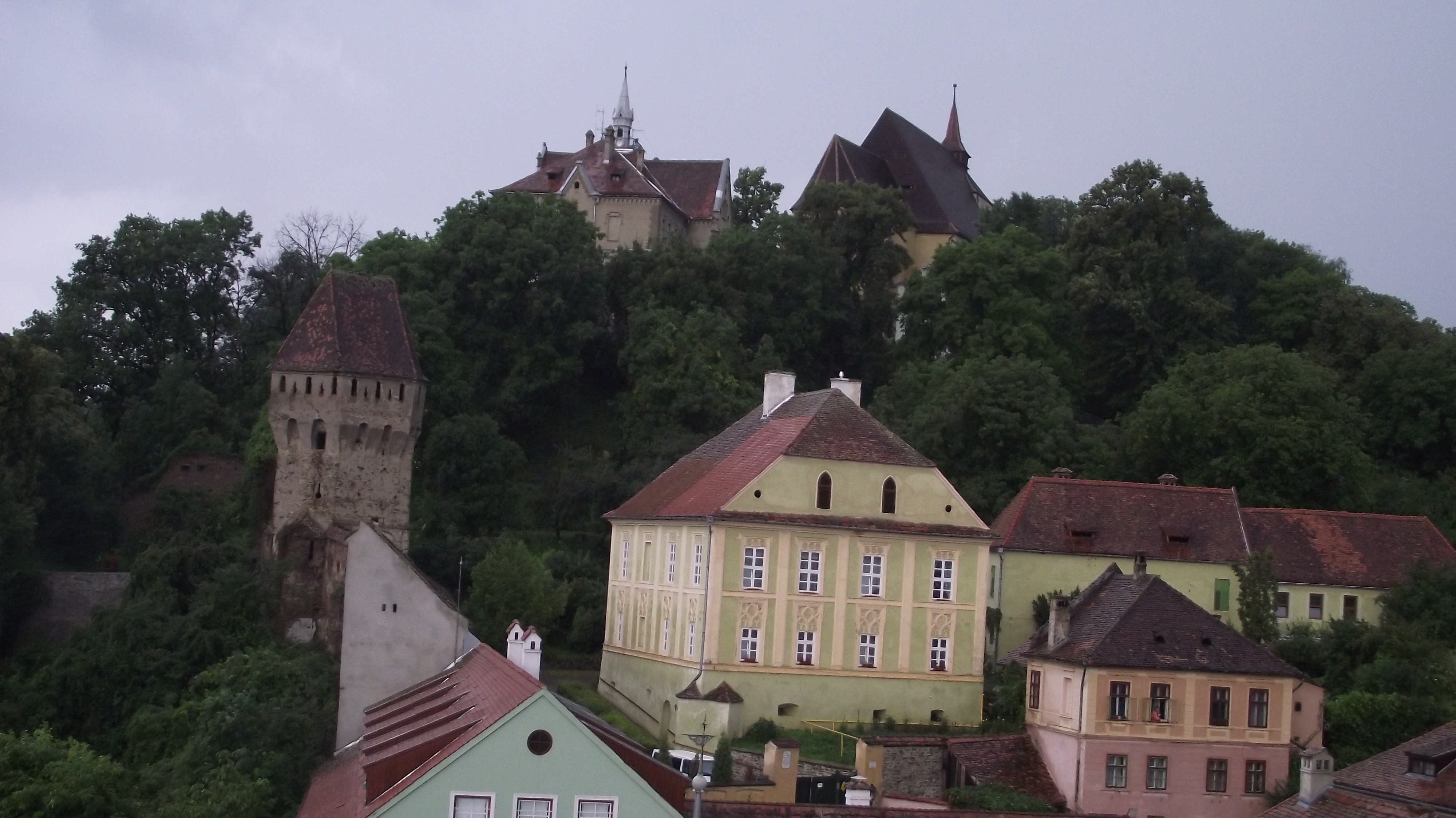
After Sighisoare, our next stop was at the Salt Mine Turda, medically renowned and recommended for its curing benefits.
Salina Turda
It is an amazing underground salt mine with a small lake inside.
When we arrived, a group of sweet children danced and sang for us, an unforgettable
experience.
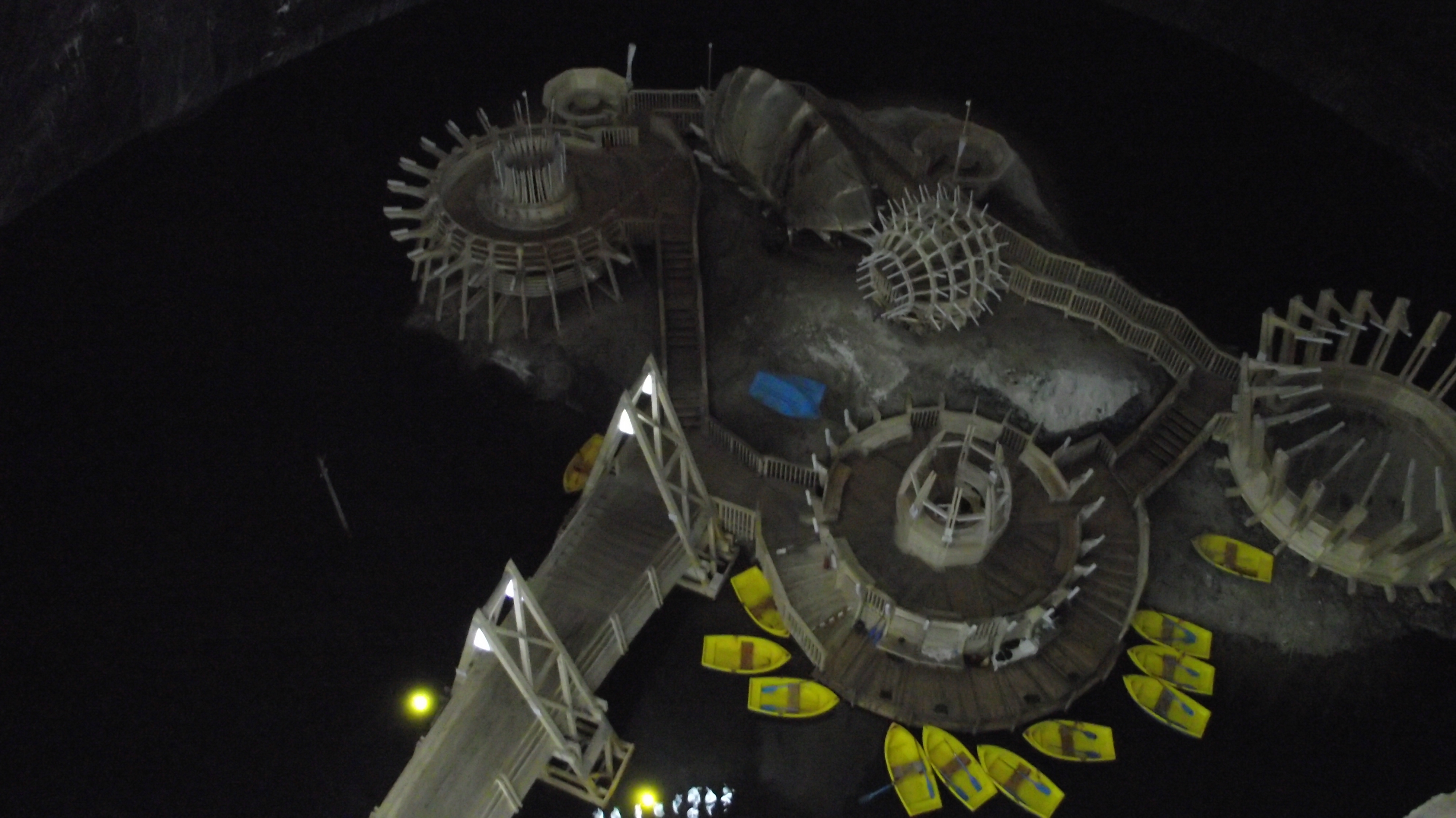
We spent the night in Alba Iulia.
Day 6 (7.7):Alba Iulia, Sibiu, Bucharest
Alba Iulia has a wonderfully refurbished medieval fortress, "Cetatea Alba" which is offering the visitors some live samples of the medieval way of living, original costumes, recreation of the habits, of the way Romanians were going to war back then, and other attractions.
Alba Iulia
Alba Iulia has a wonderfully refurbished medieval fortress, "Cetatea Alba" which is offering the visitors some live samples of the medieval way of living, original costumes, recreation of the habits, of the way Romanians were going to war back then, and other attractions.
Alba Iulia
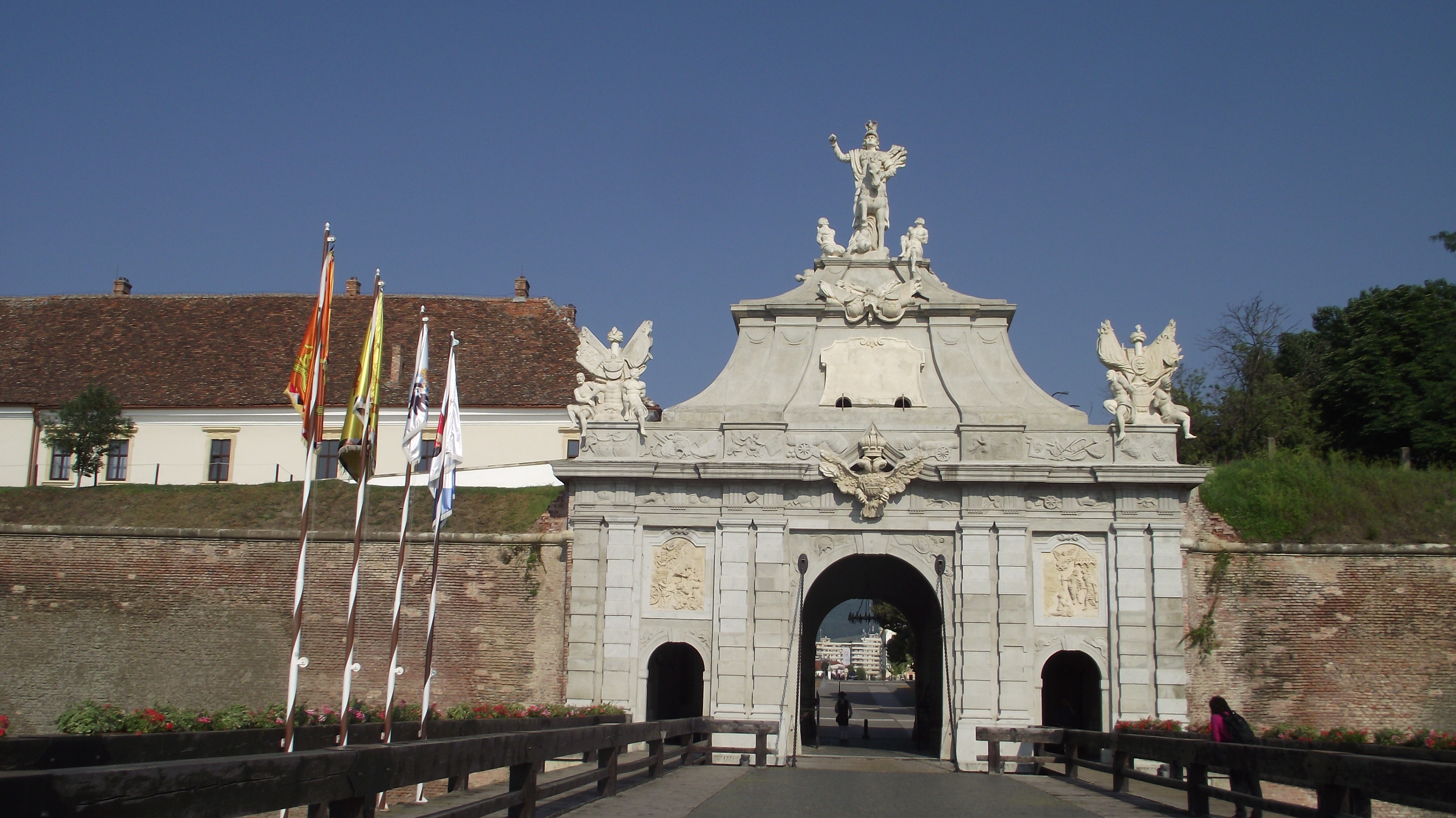
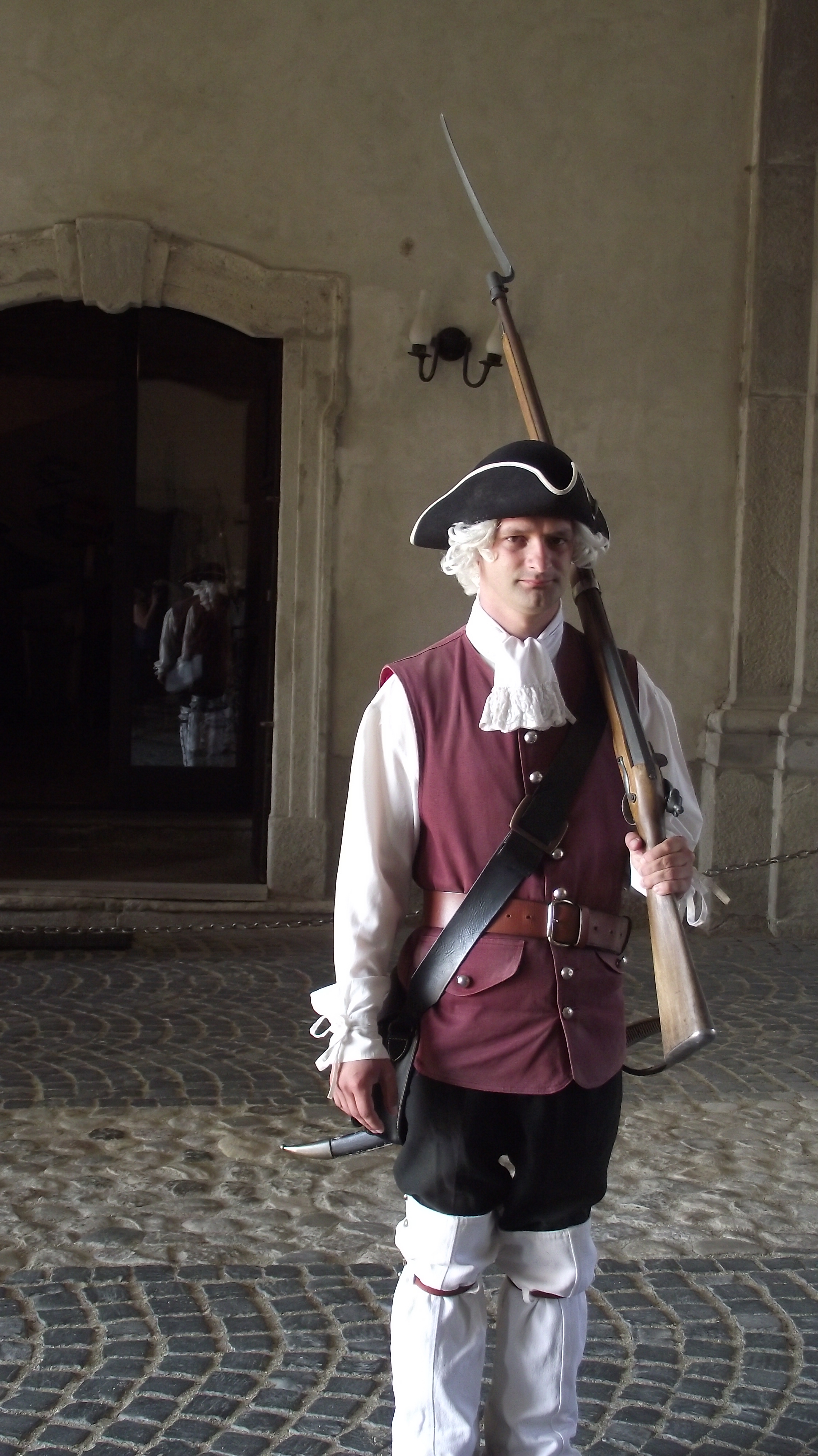
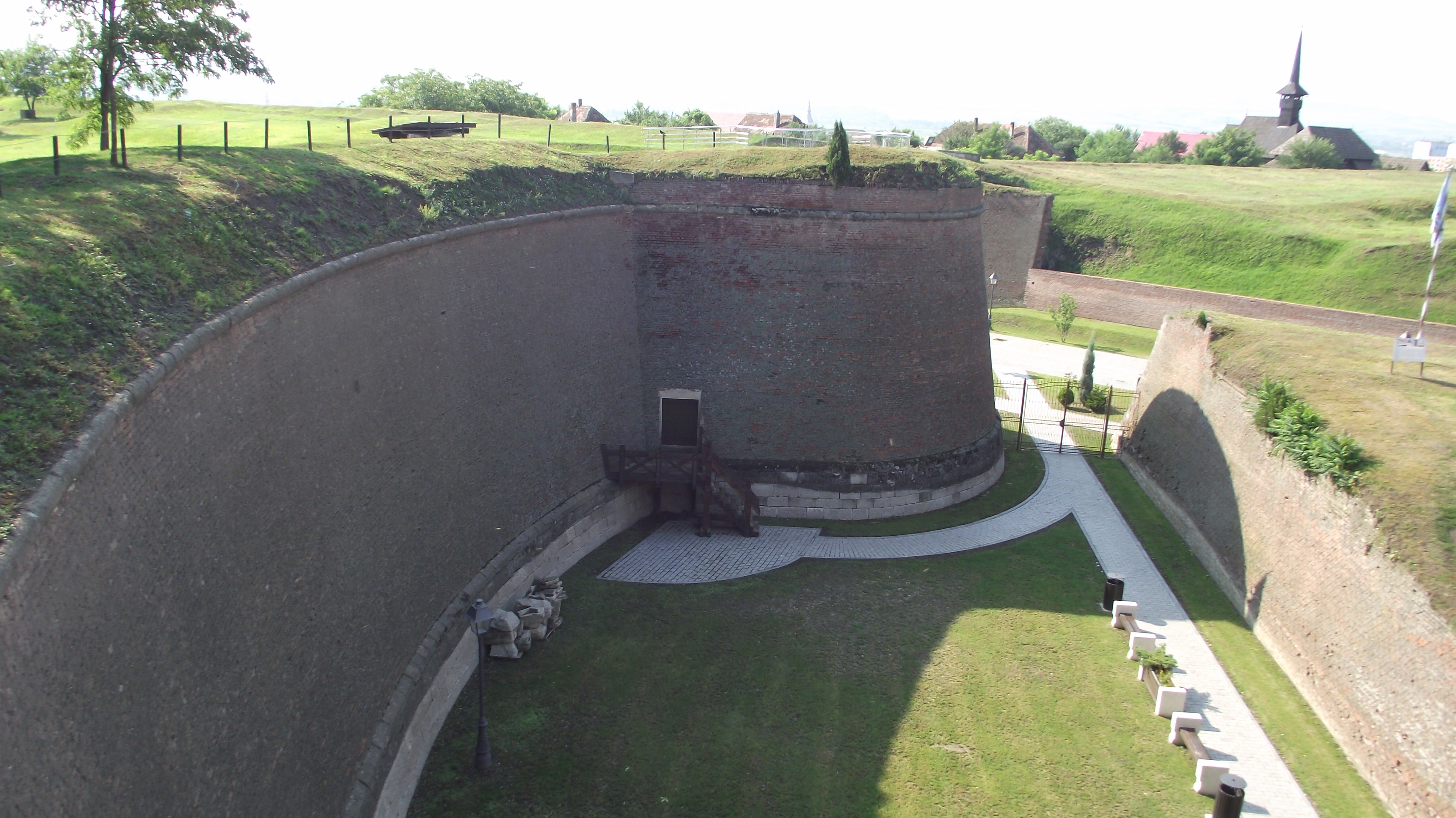
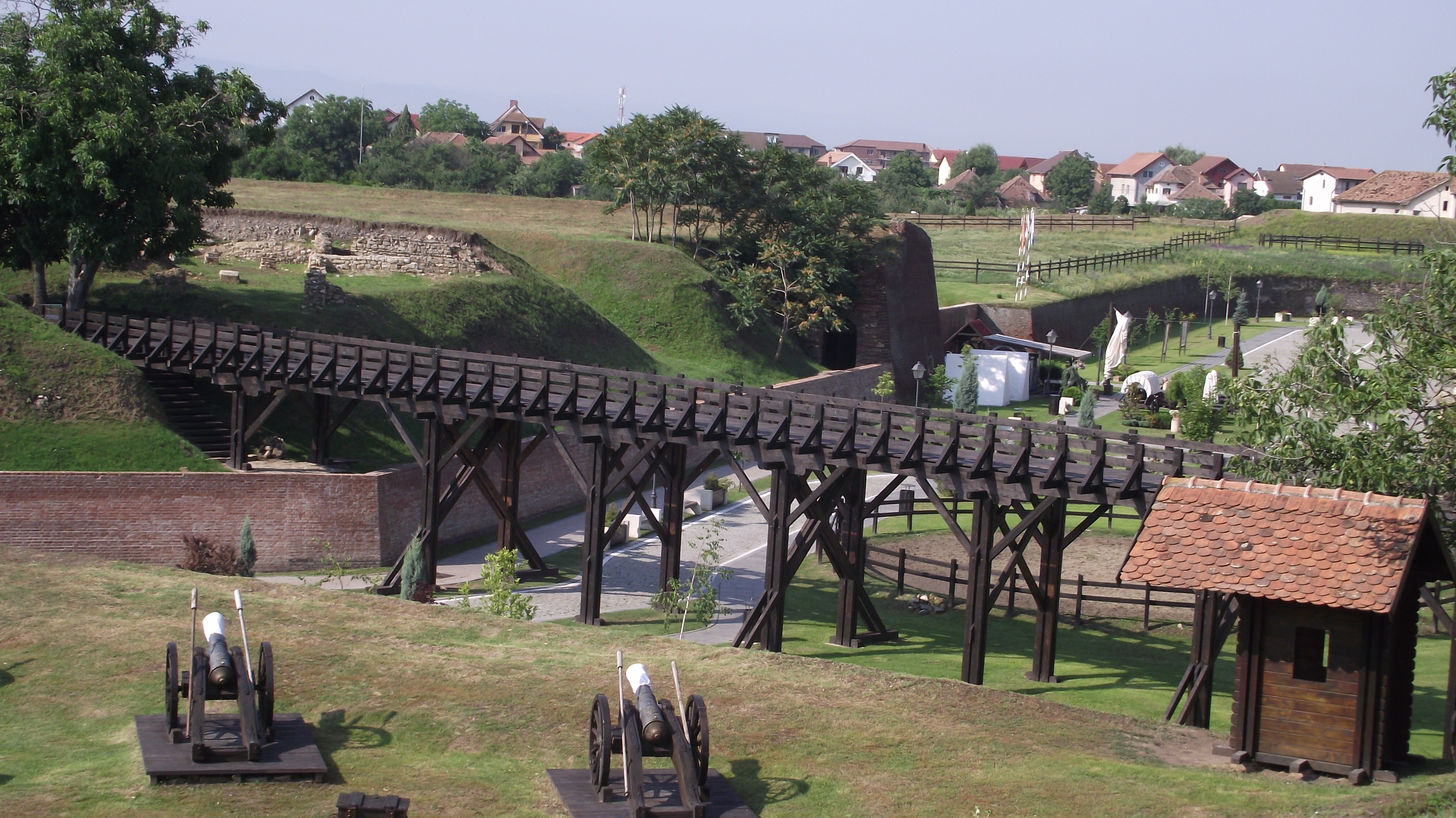
Leaving Alba Iulia, we continued our busy journey to Sibiu, a magnificent city which was elected the European Capital of Culture back in 2007.
Among other features, Sibiu is famous for the unique windows of the attics, eye-shaped, therefore called "Ochii Sibiului" or "The Eyes of Sibiu".
Among other features, Sibiu is famous for the unique windows of the attics, eye-shaped, therefore called "Ochii Sibiului" or "The Eyes of Sibiu".
Piata Mare
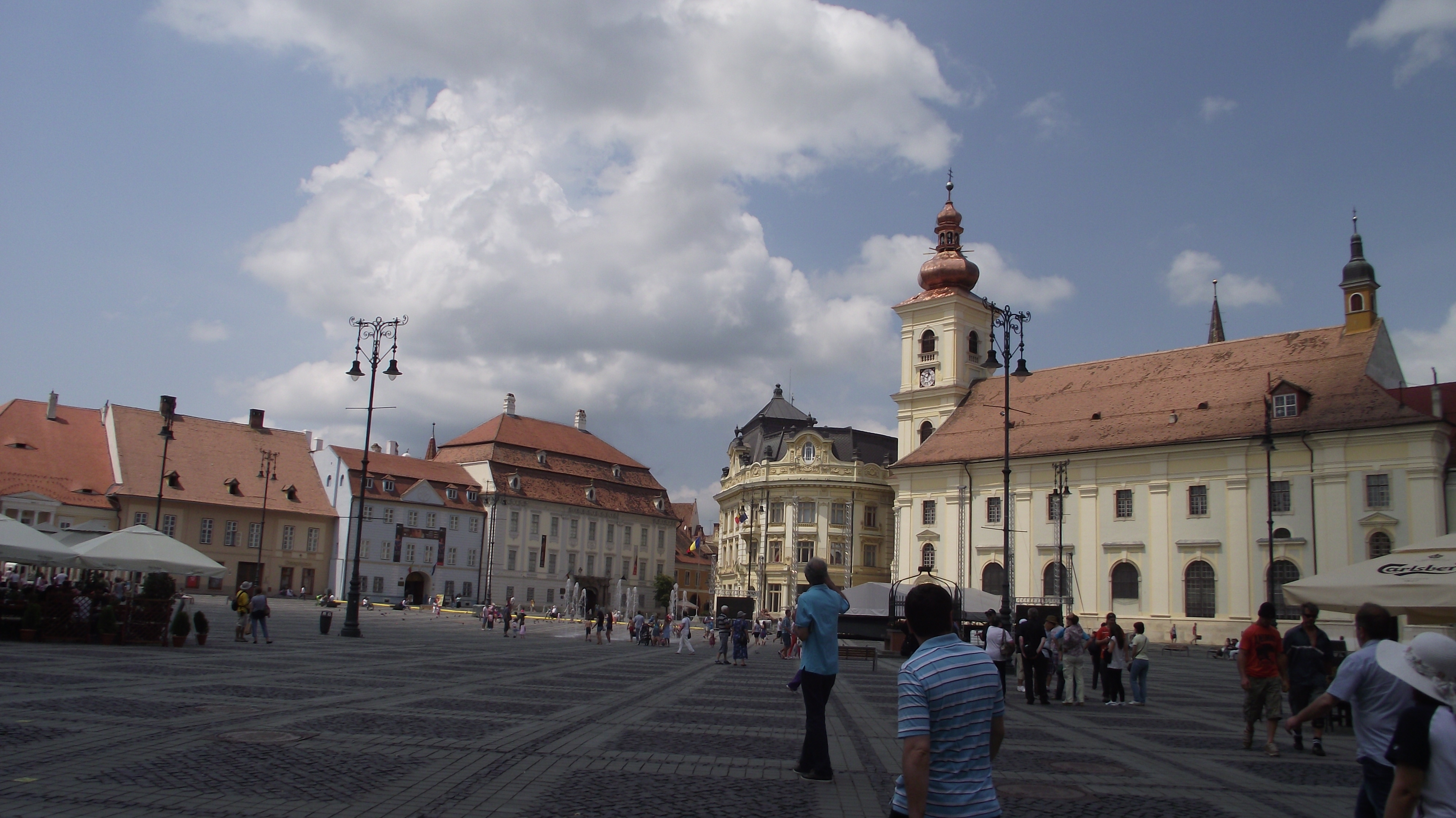
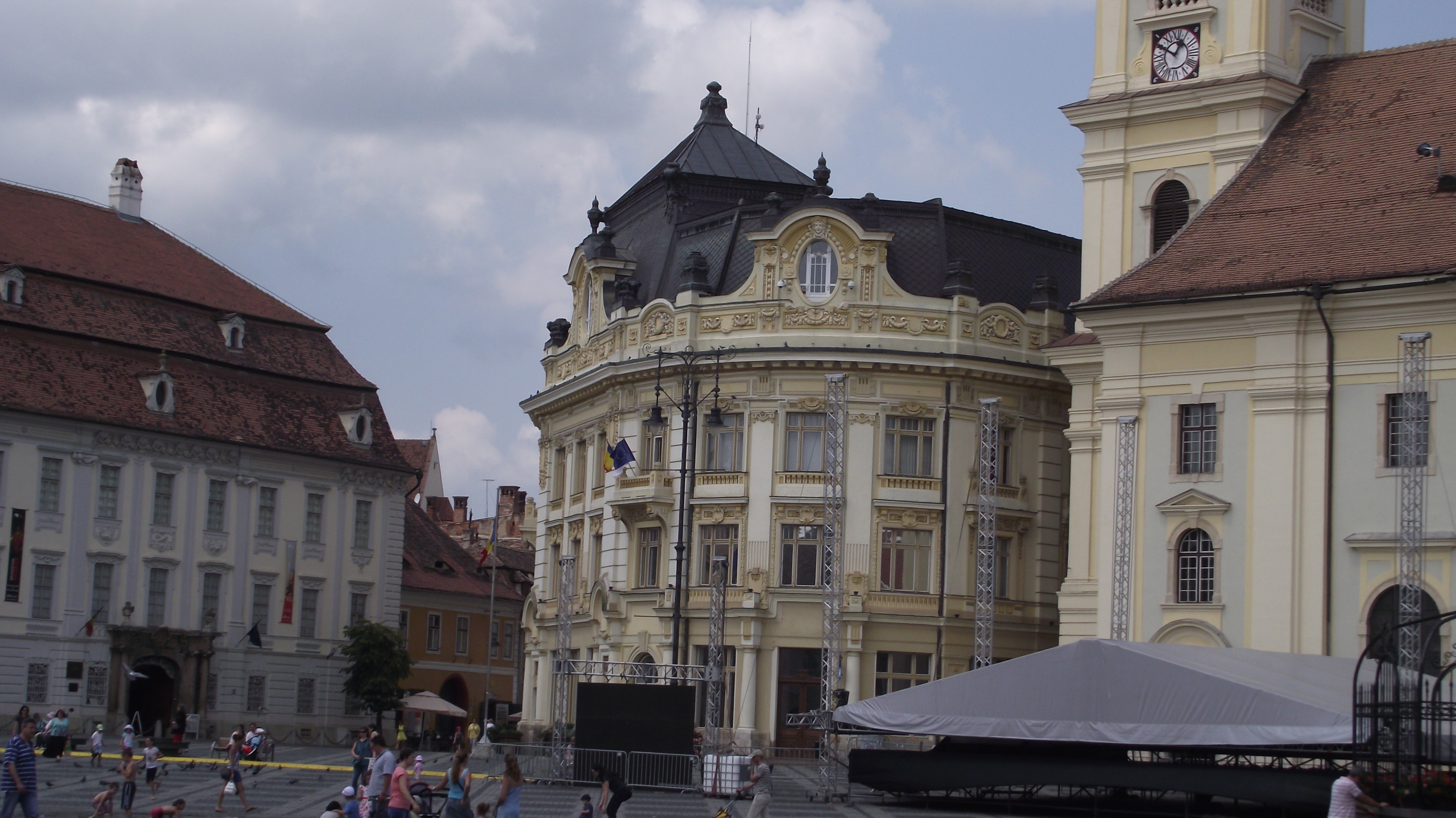
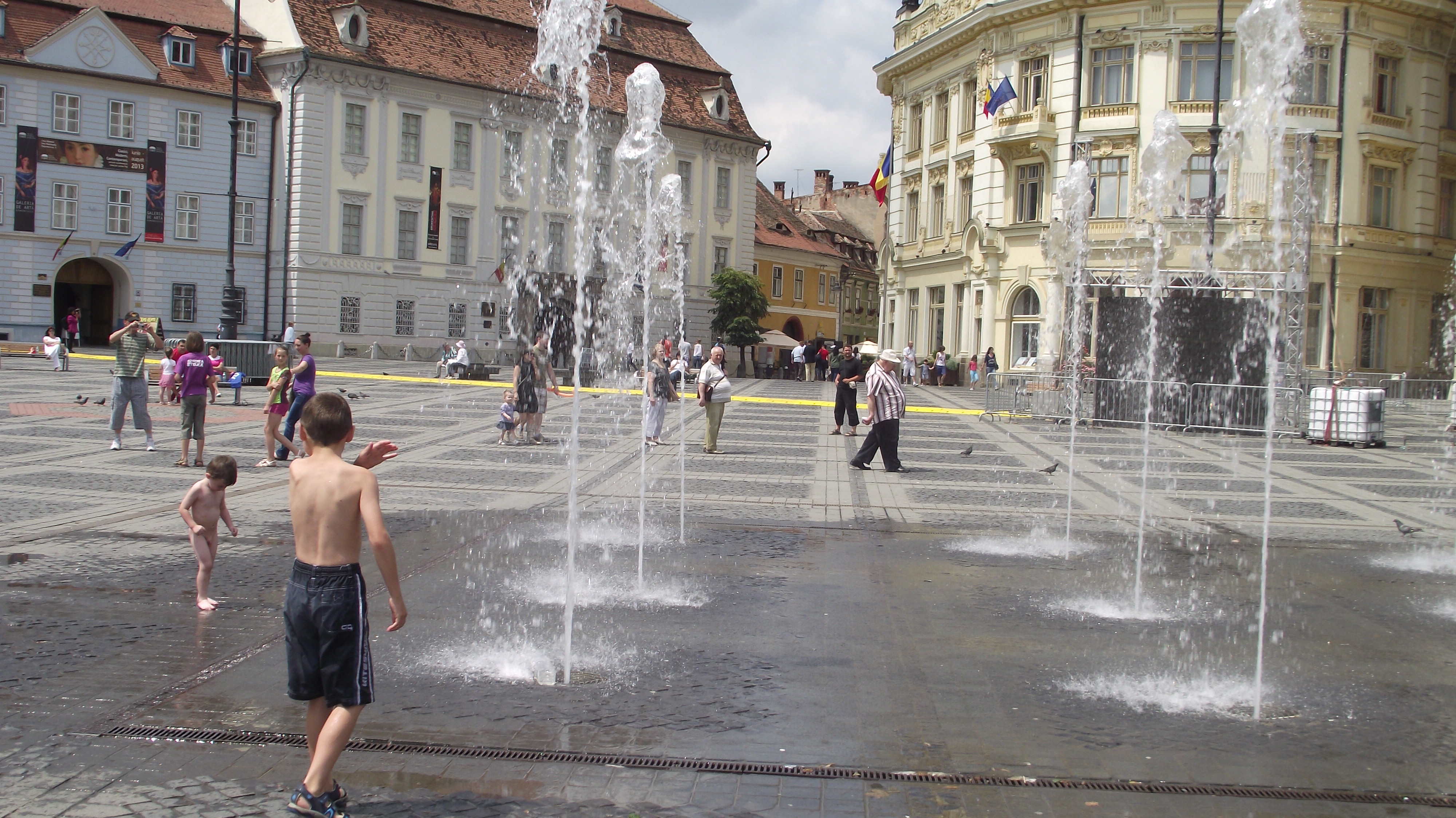
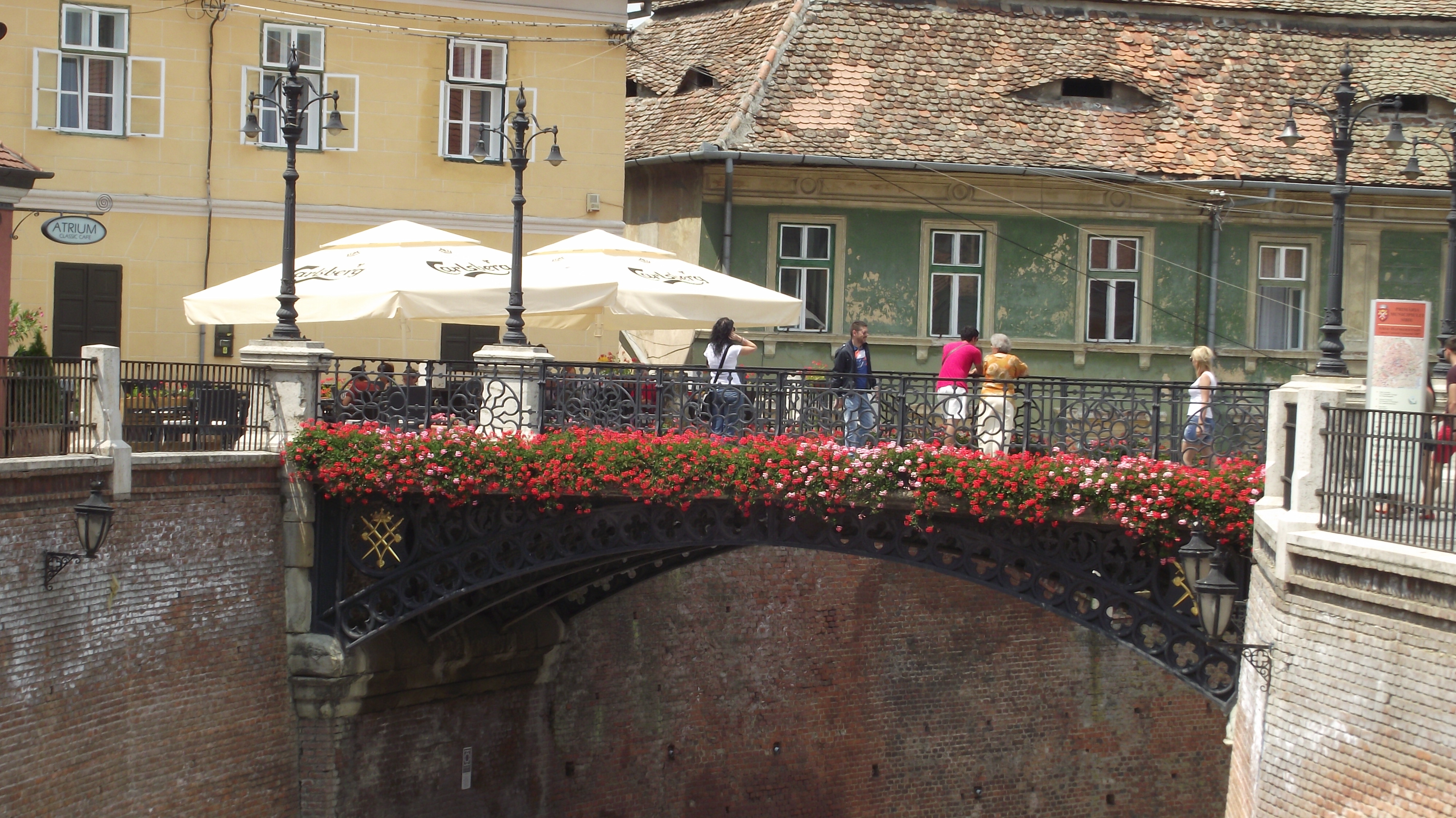
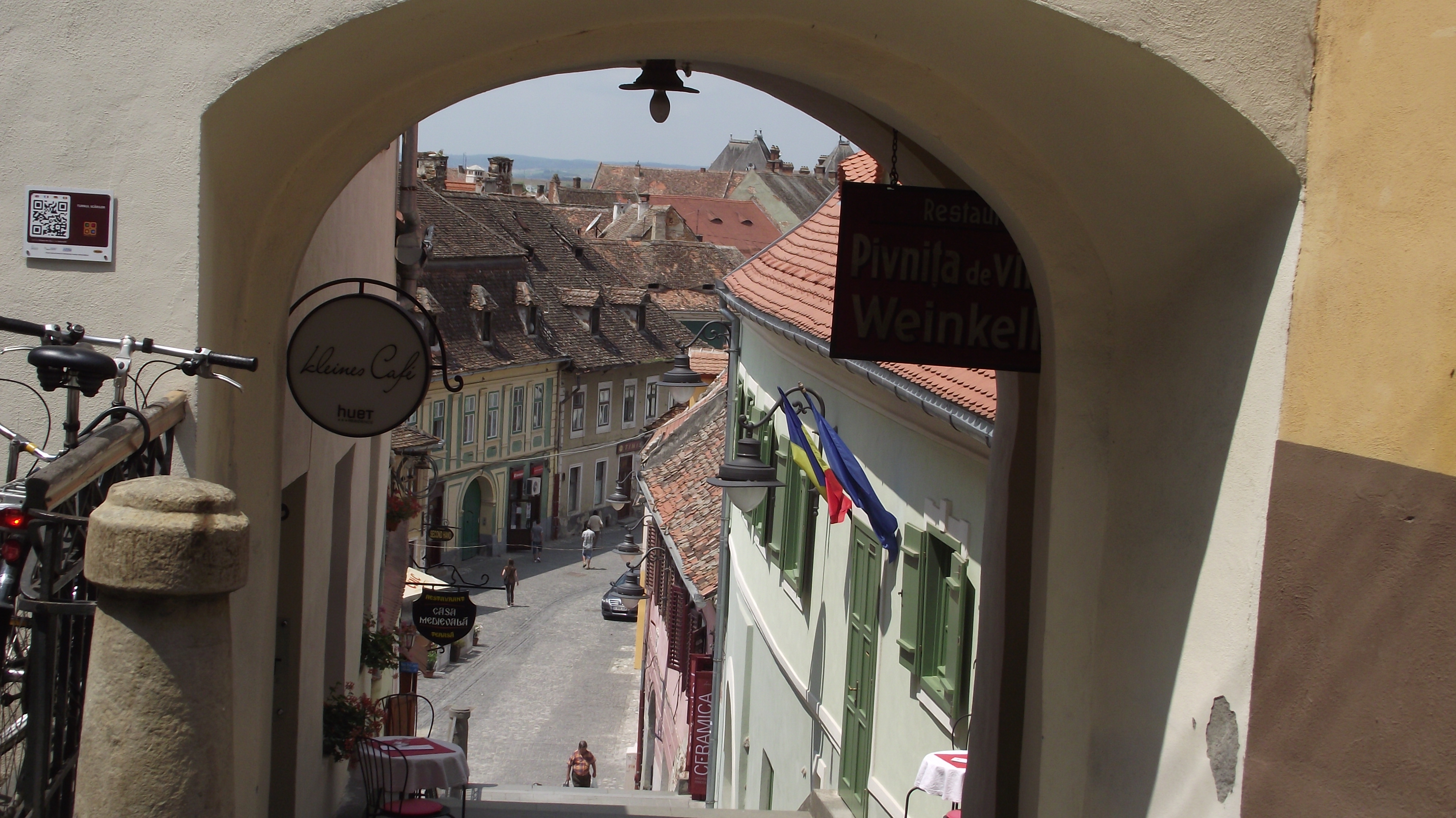
The famous "Eyes" of Sibiu
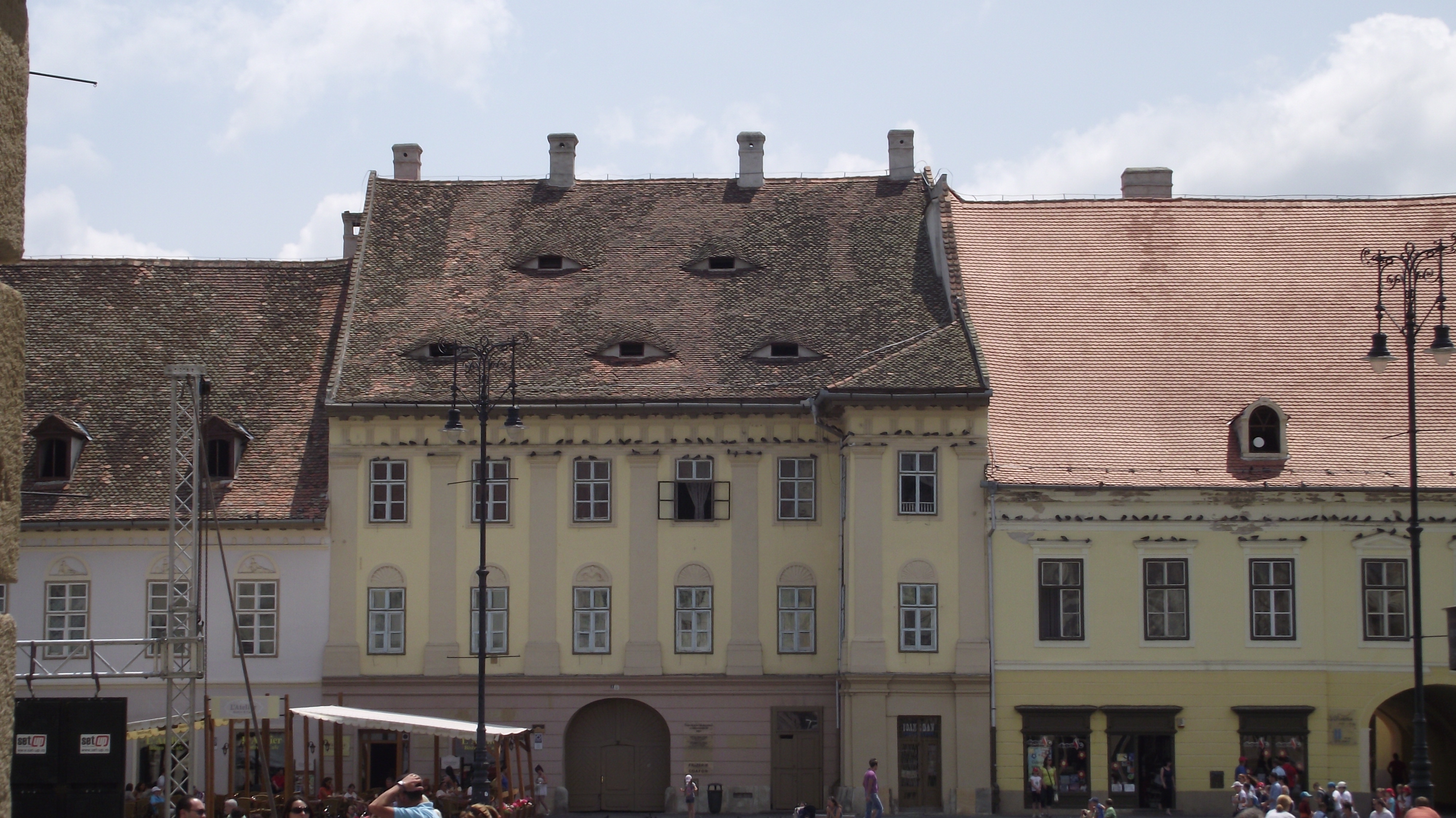
We took a tour of the city center and continued to the Village Museum Astra, located a few km away from Sibiu, within its surrounding forest.
The Astra Museum is a must see for every tourist visiting Sibiu, as it displays at original scale some houses, water-mills, wind-mills the local peasants were using hundred of years ago.
The Astra Museum is a must see for every tourist visiting Sibiu, as it displays at original scale some houses, water-mills, wind-mills the local peasants were using hundred of years ago.
Astra Museum
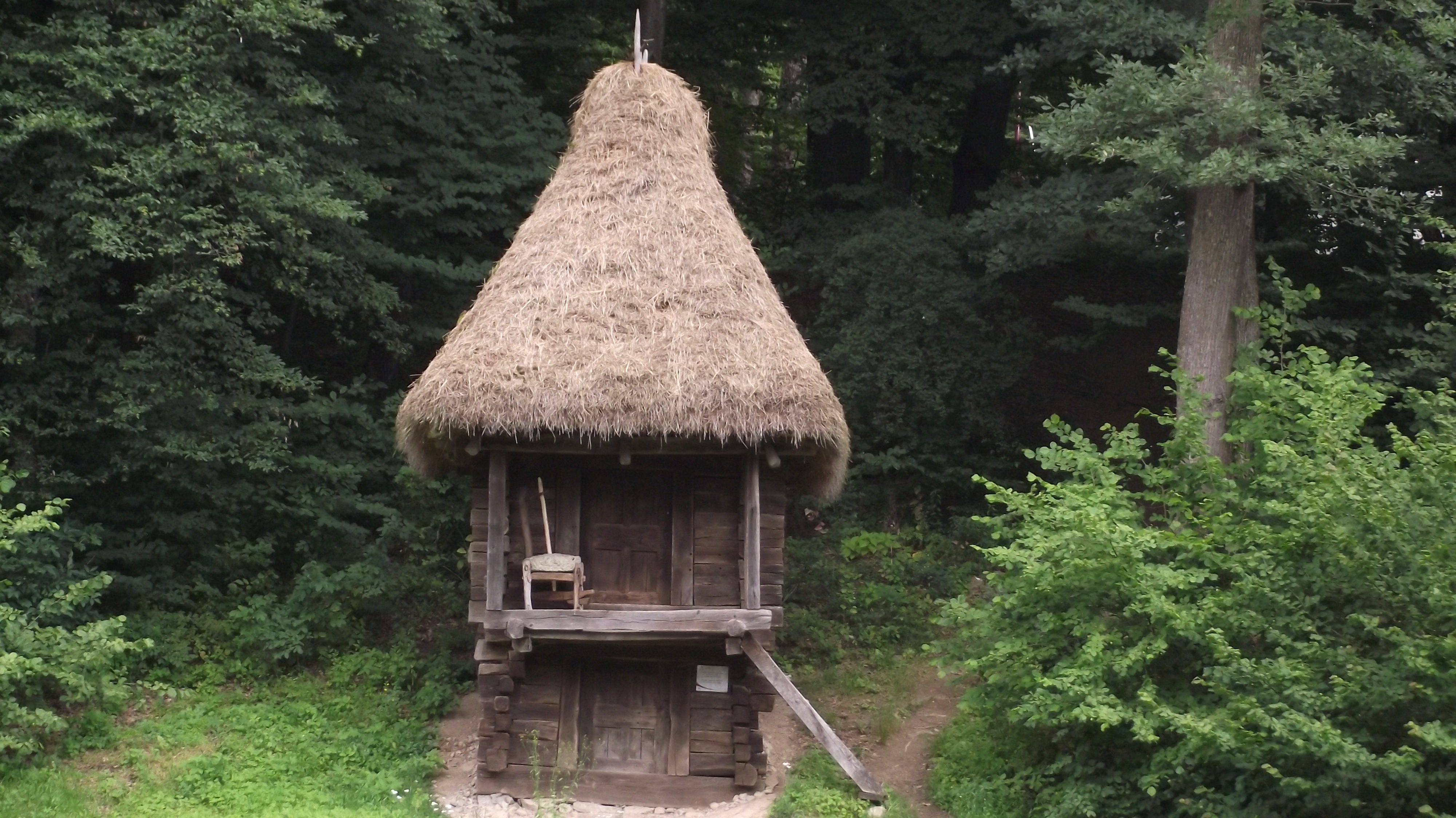
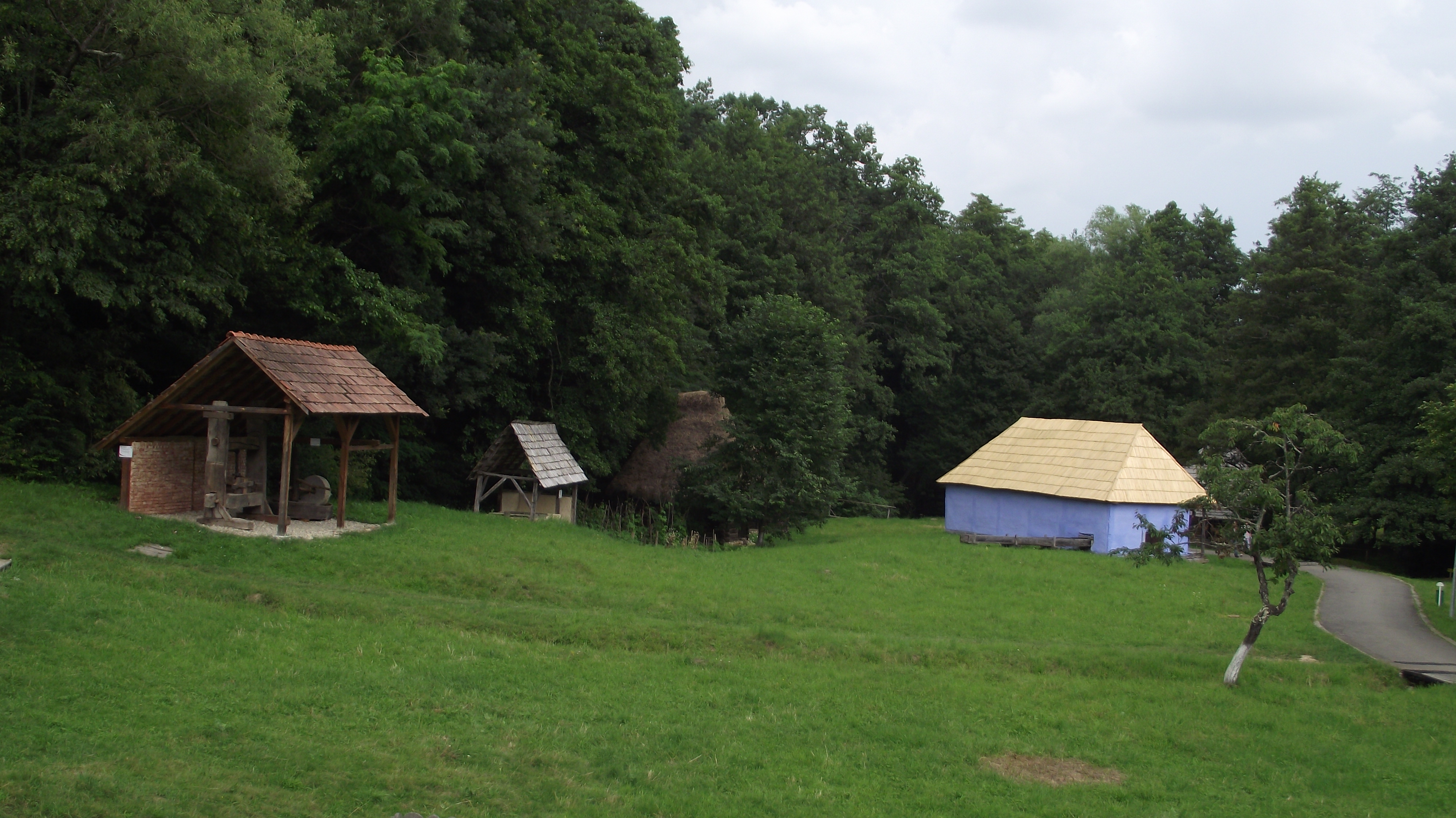
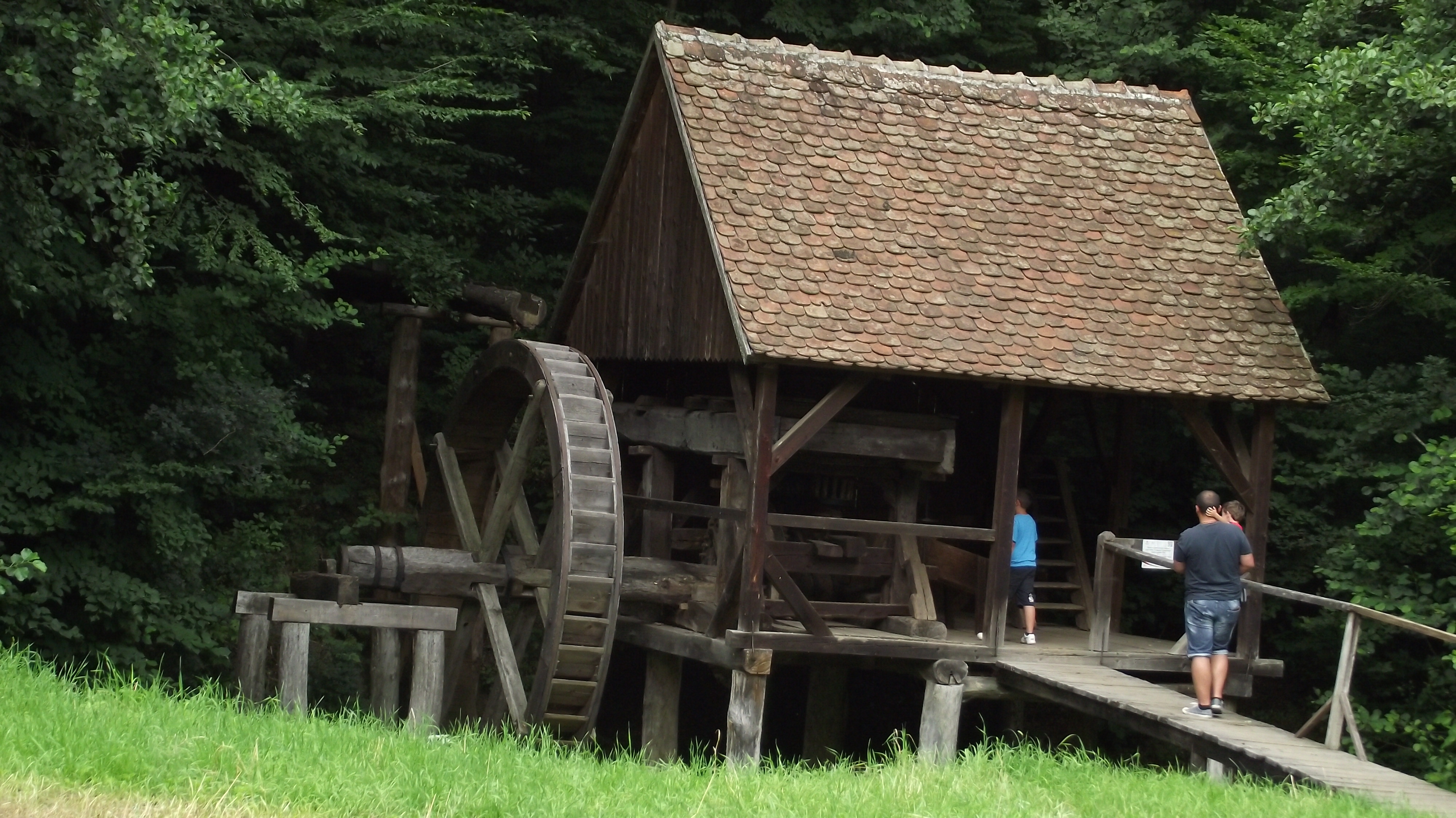
We left Sibiu and we chose a different way back to Bucharest, another amazing and almost wild part of Romania: :Valea Oltului" or the River Olt Valley.
The road is very sinuous across very green mountains, high gorges and little villages og unique beauty.
The road is very sinuous across very green mountains, high gorges and little villages og unique beauty.
Olt River
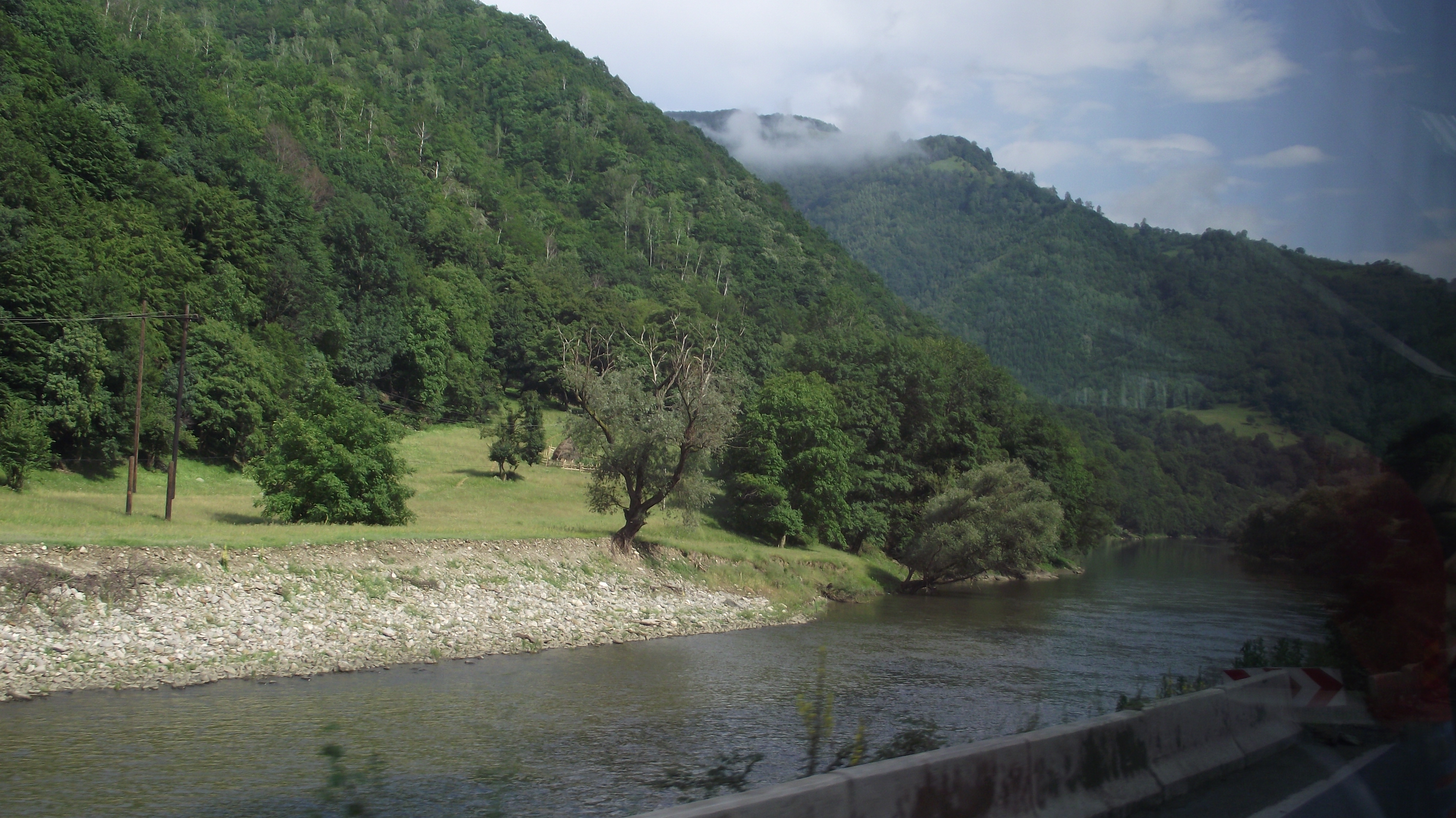
We have stopped at the Cozia Monastery, where tourists find some spiritual peace and shed from the sun.
Cozia Monastery
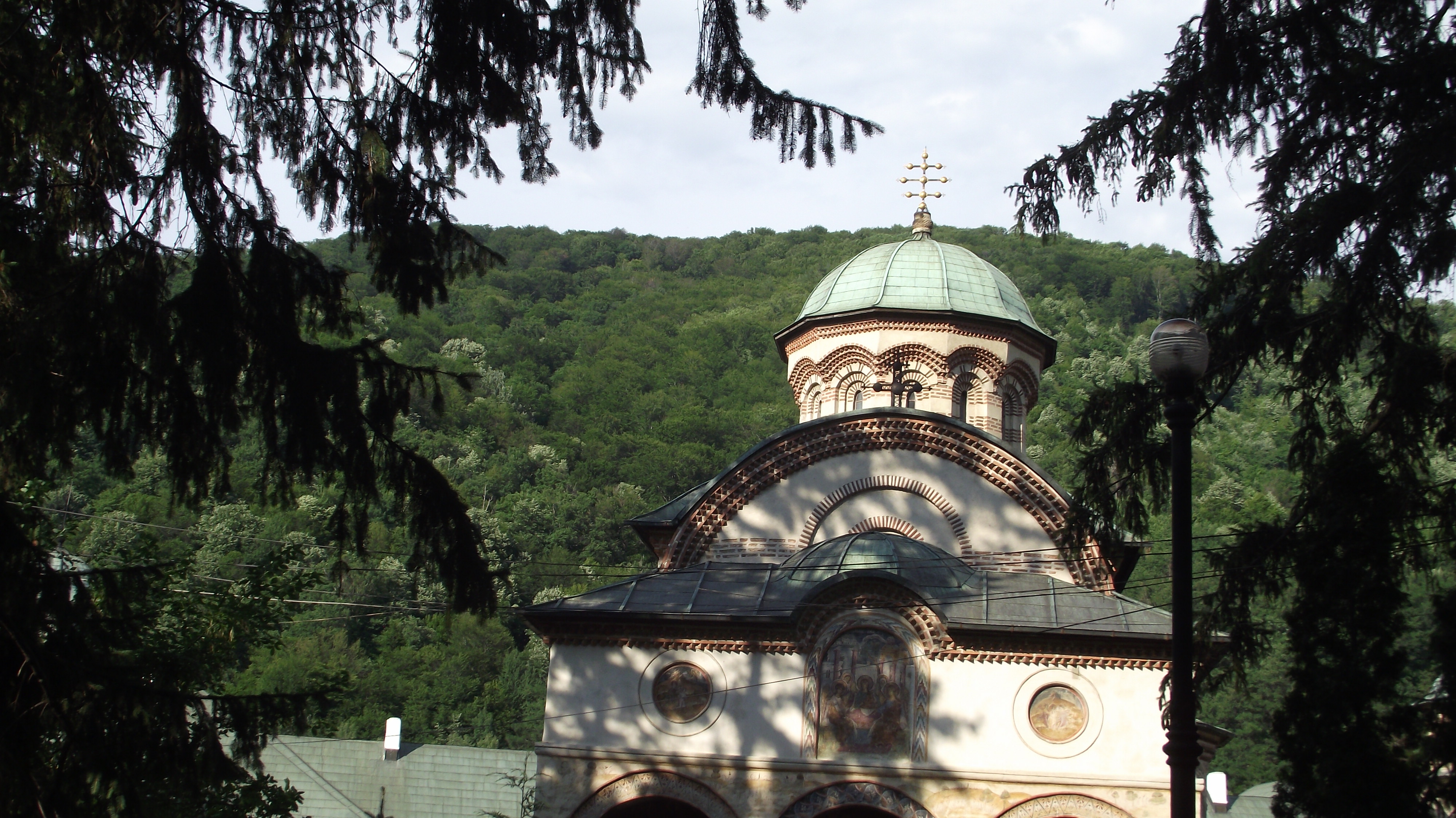
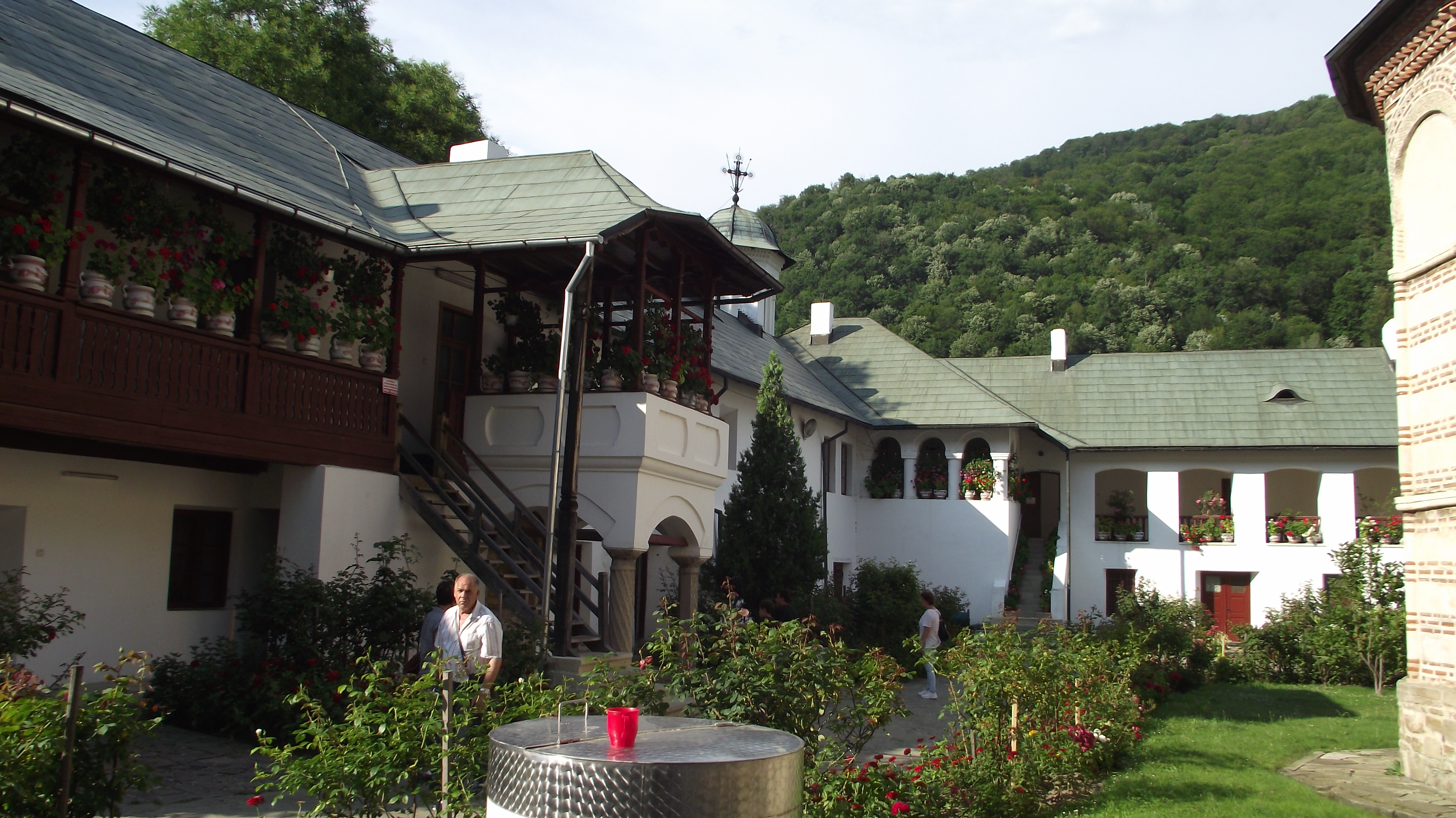
After all this journey through Romania, we have realized we could have never find a better name for our Website! The Beauty of Romania is waiting for the tourists all over the world in general and Israel especially, to discover it and to recharge their batteries with many colors, flavors, nature, smiling people.
Romania is an amazing country and we had the opportunity to see its beauty.
The all trip was well organized,we saw amazing places, met wonderful local people and of course ate the great food Romania has to offer.
I want to thank the Tourism ministry for a superb conference and trip.
Special thanks to Mrs. Marina Barabancea, Director of the Romanian National Tourism Office in Madrid,Spain, who invited us and gave us the opportunity to be exposed to the beauty of Romania.
The all trip was well organized,we saw amazing places, met wonderful local people and of course ate the great food Romania has to offer.
I want to thank the Tourism ministry for a superb conference and trip.
Special thanks to Mrs. Marina Barabancea, Director of the Romanian National Tourism Office in Madrid,Spain, who invited us and gave us the opportunity to be exposed to the beauty of Romania.
